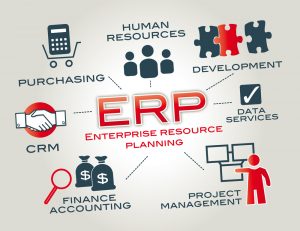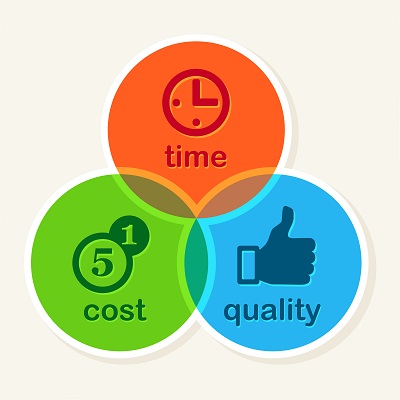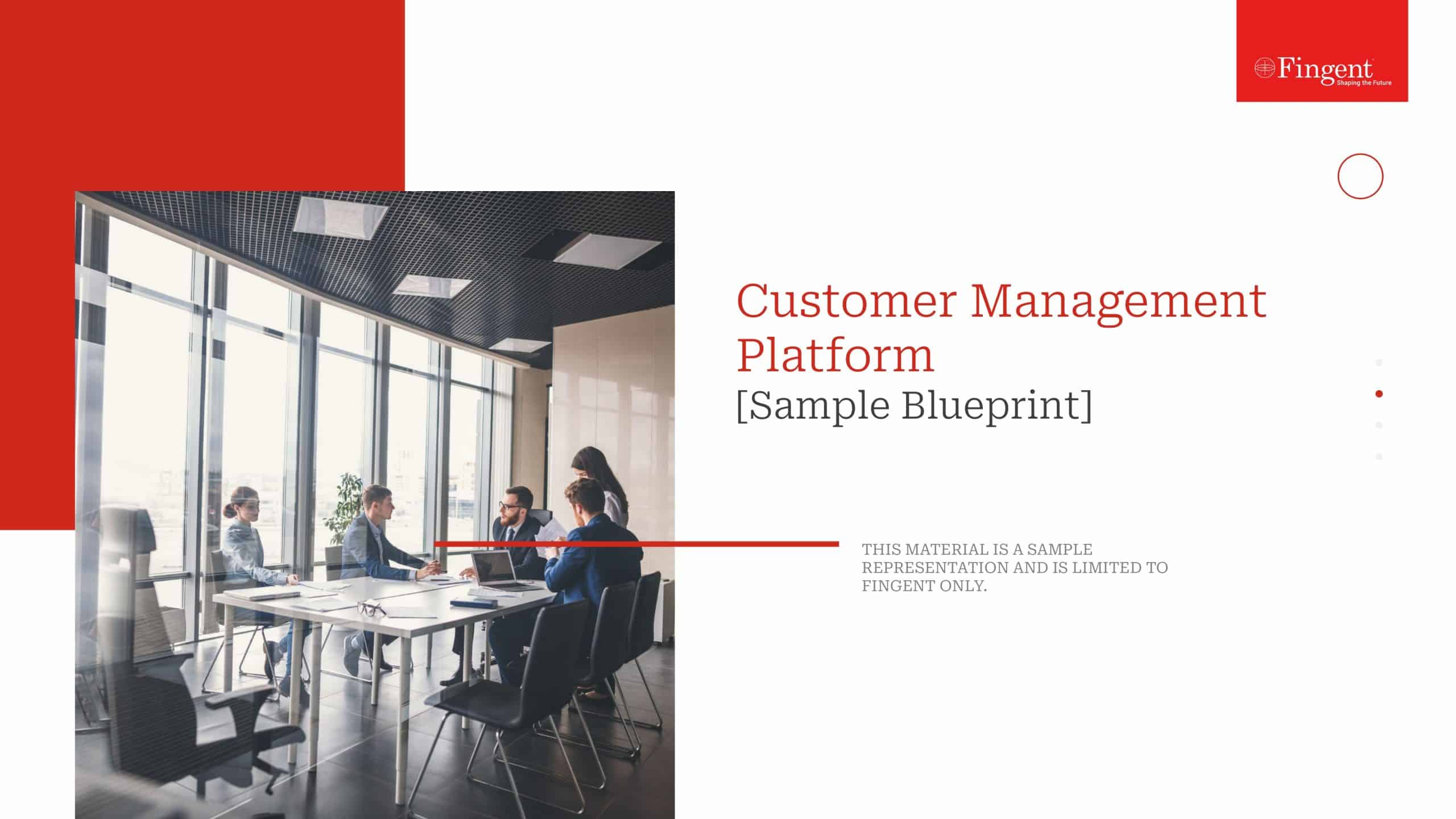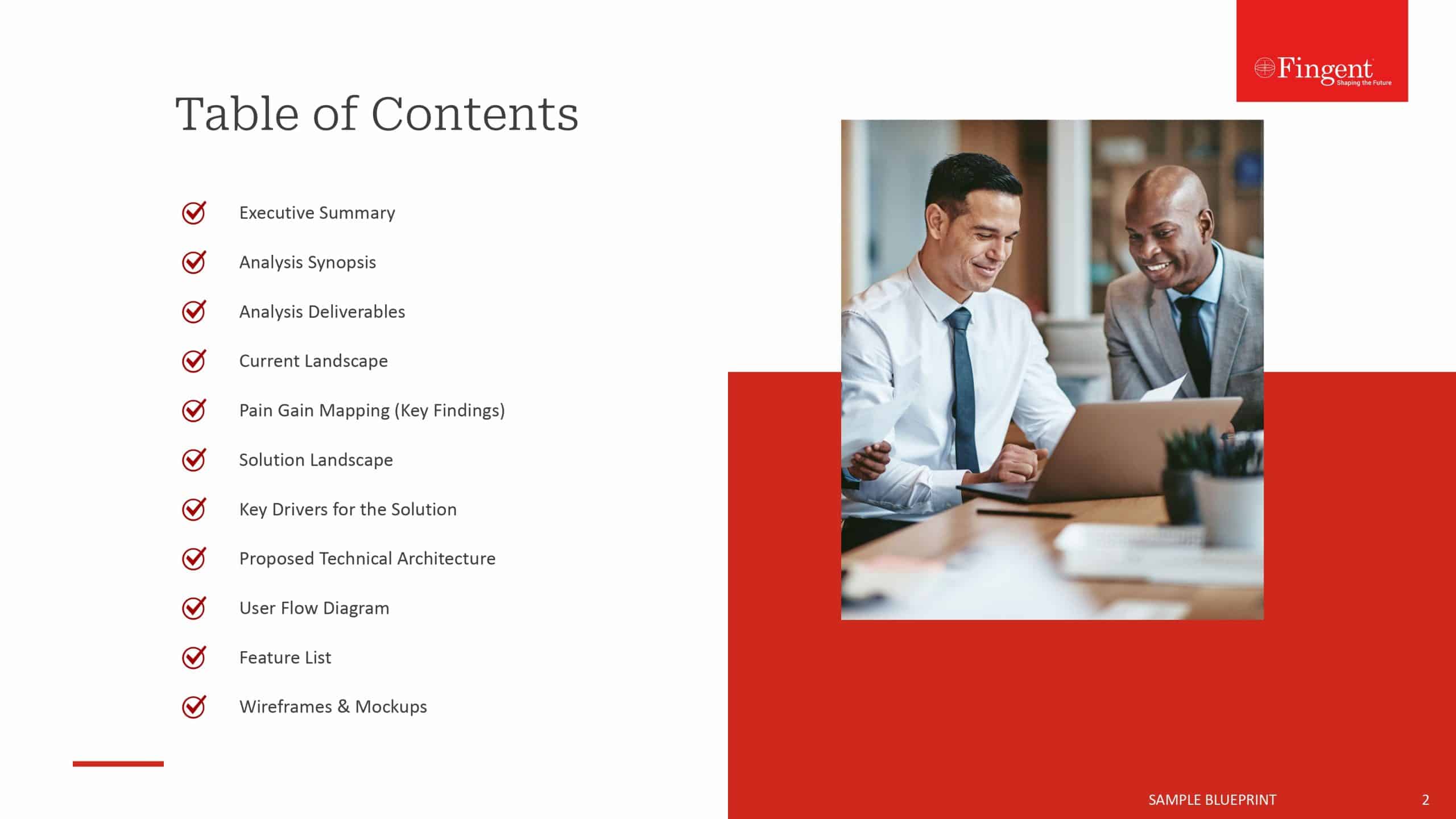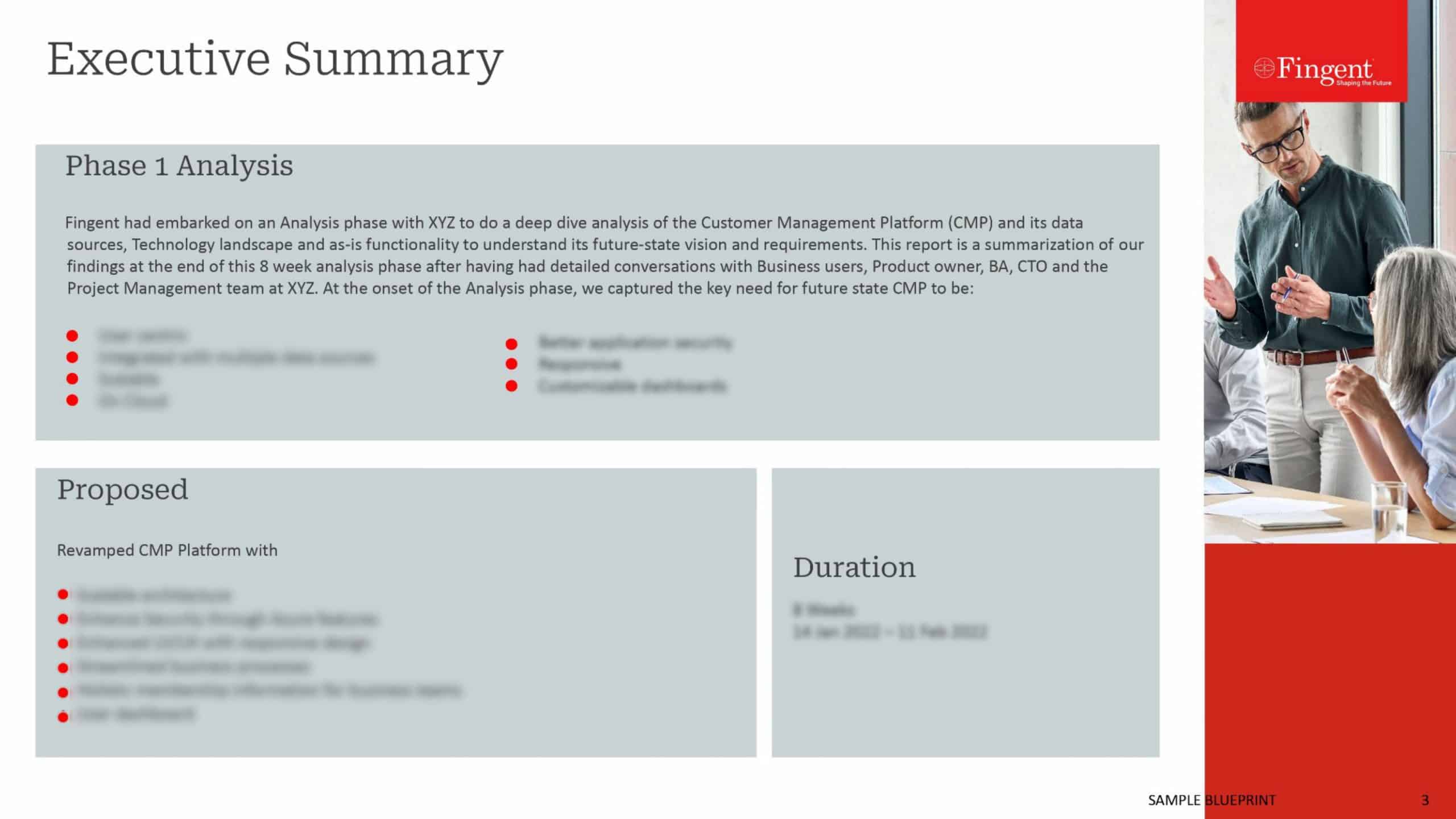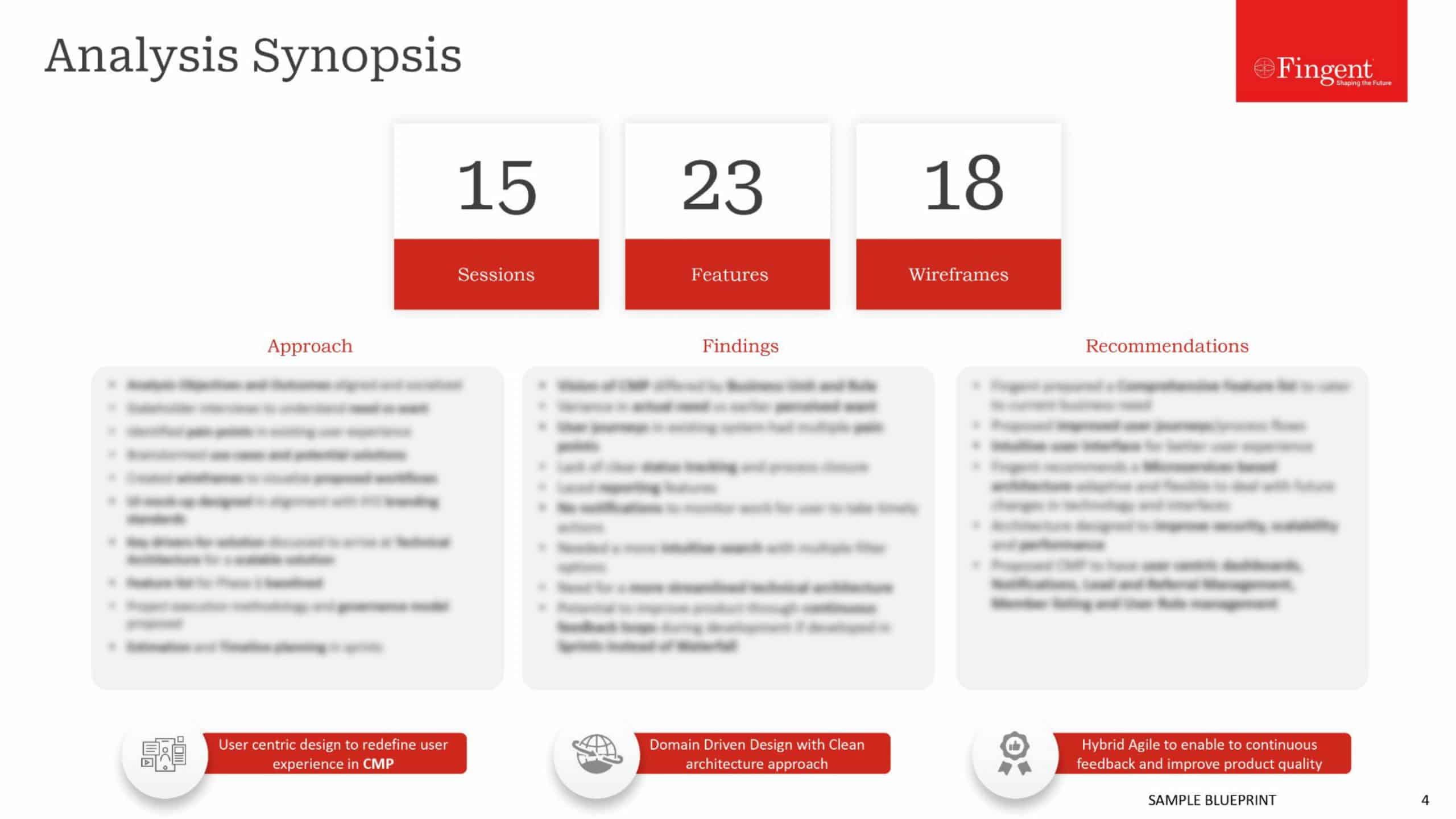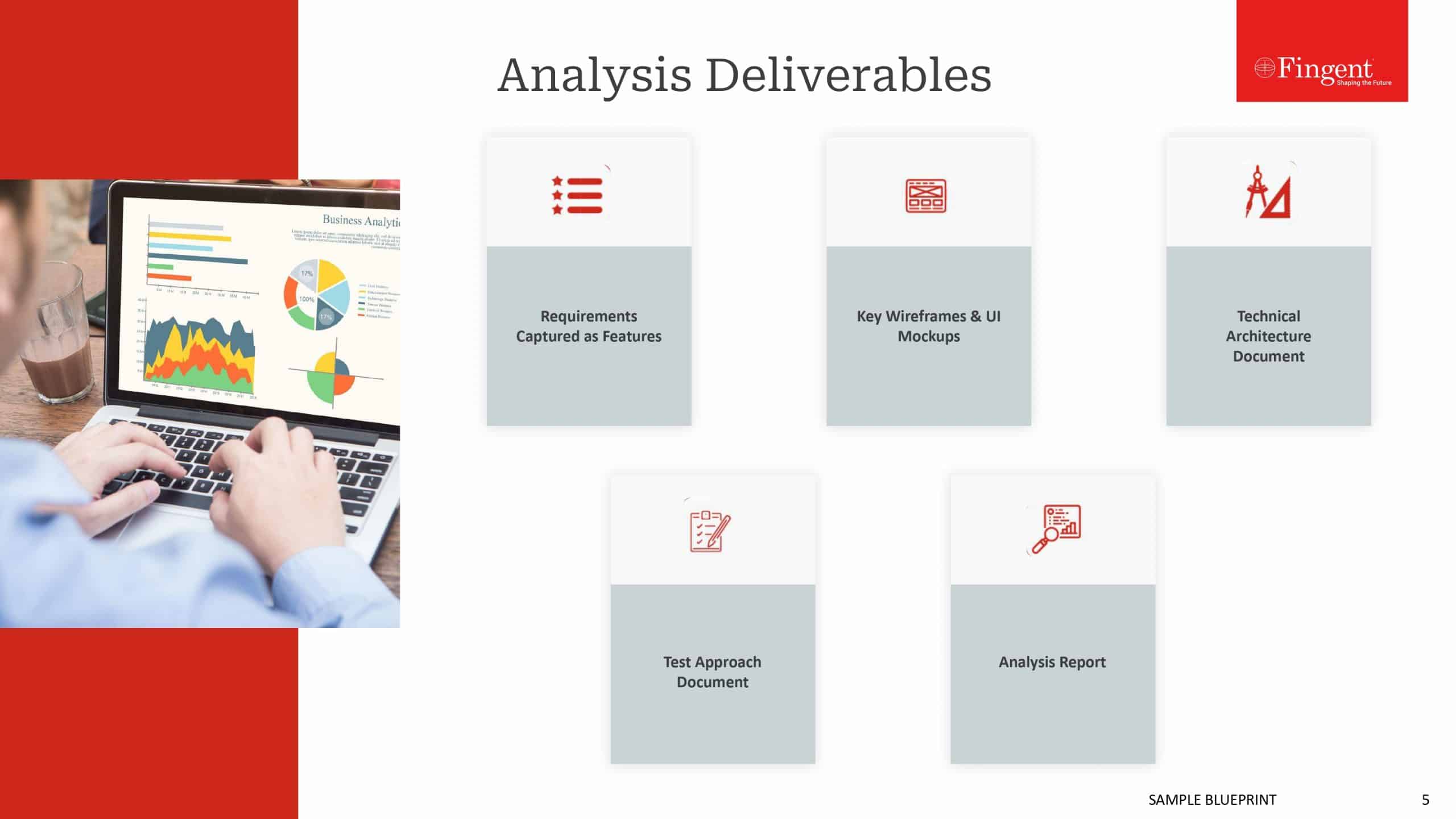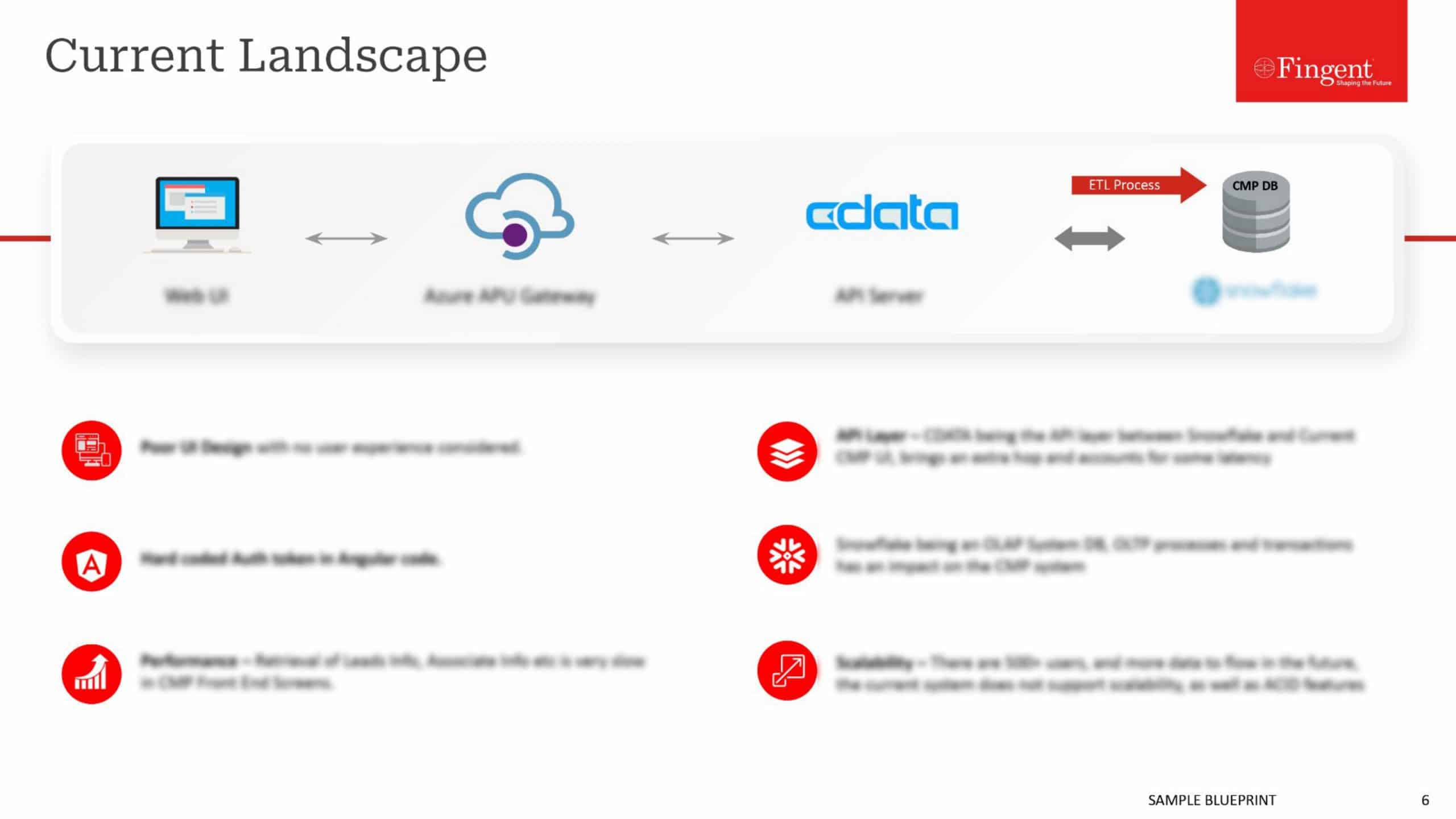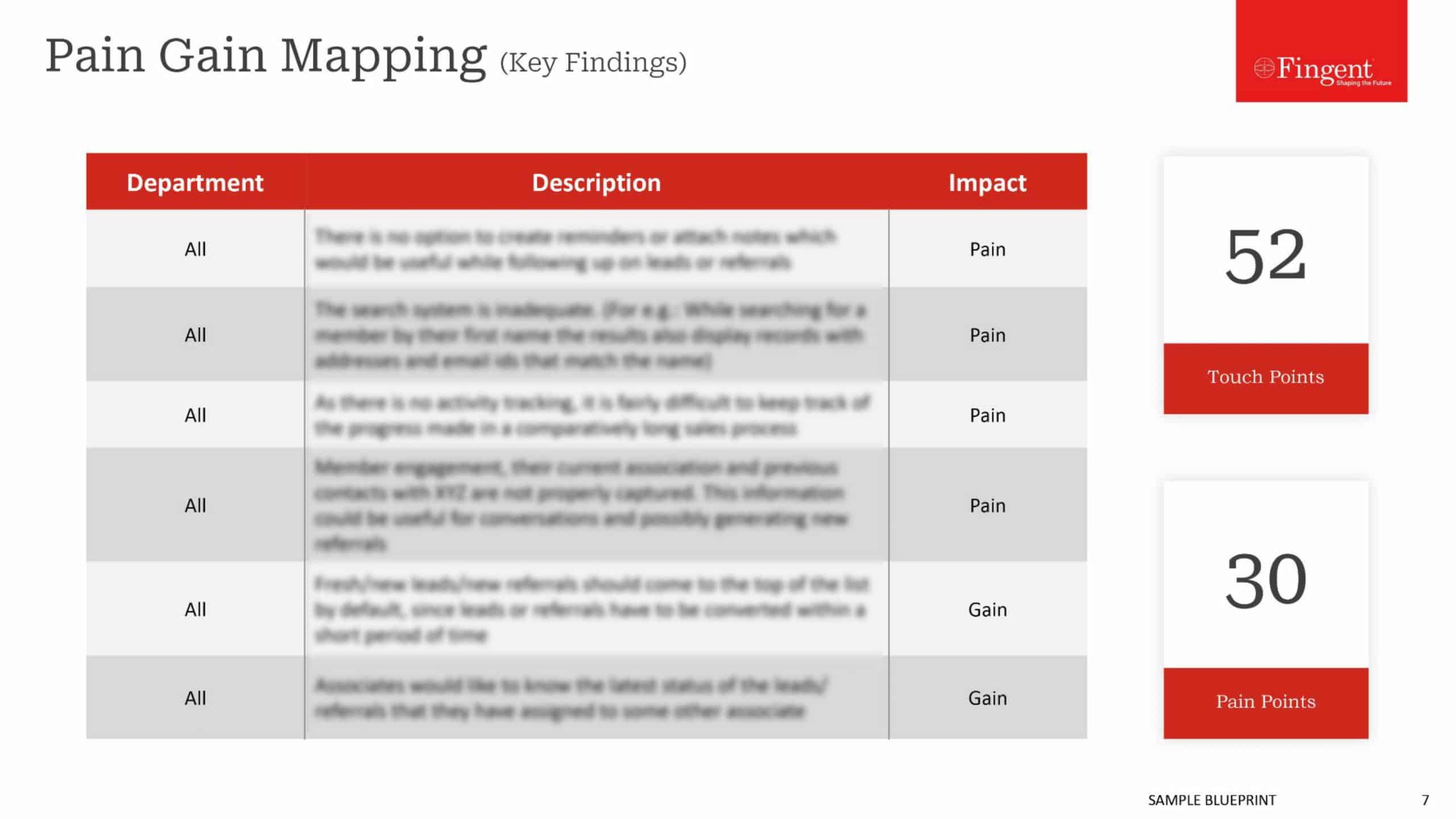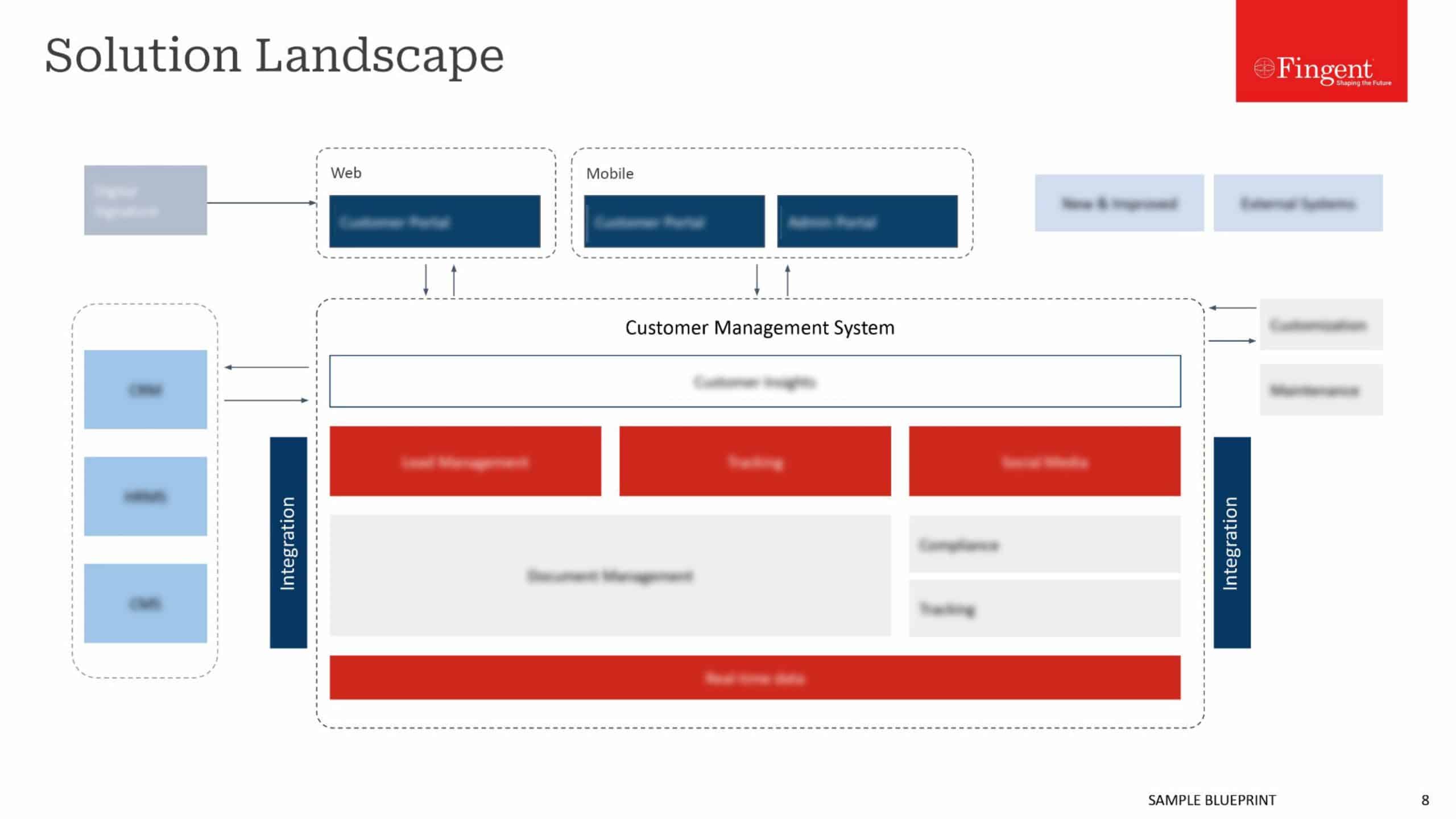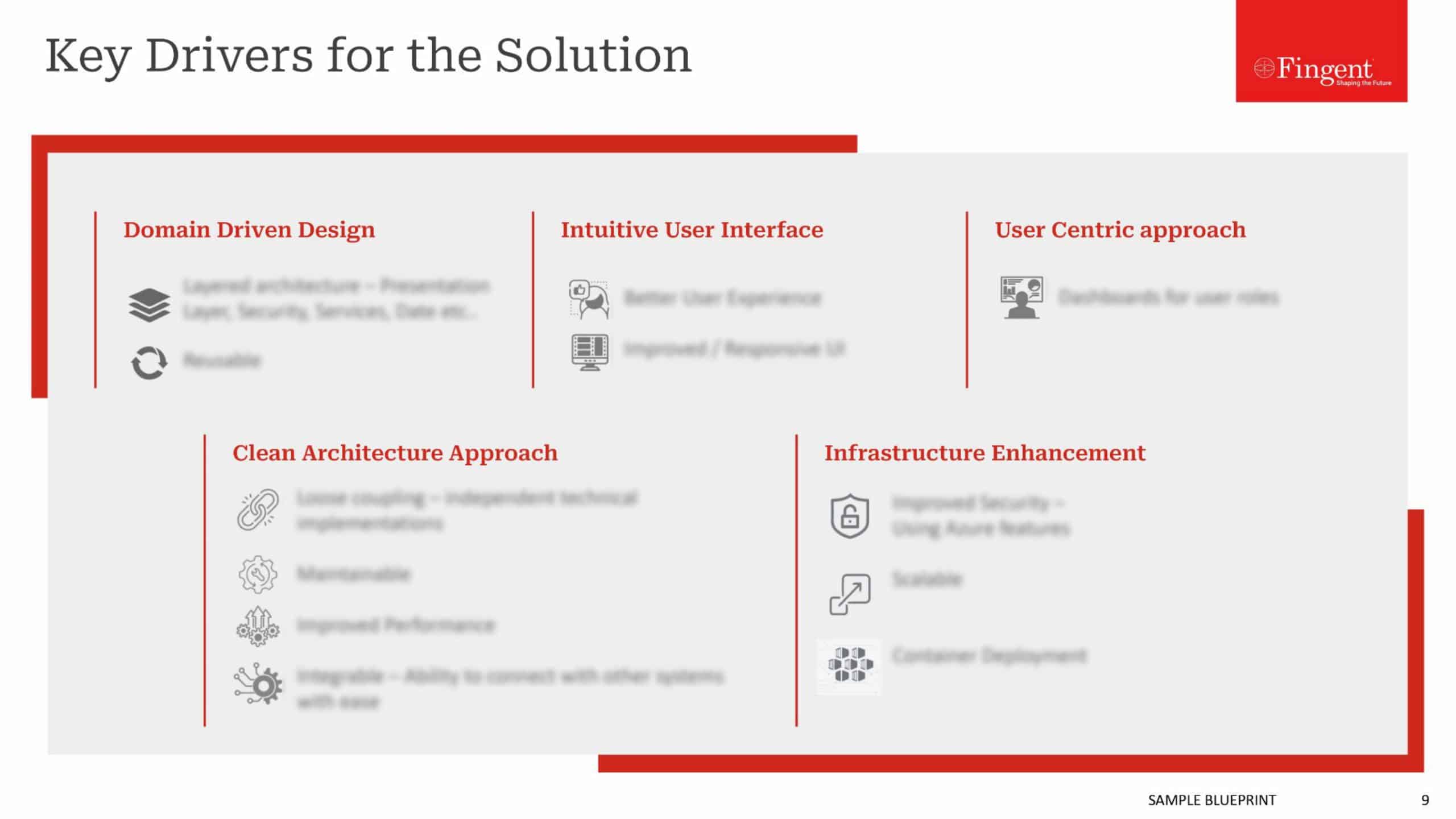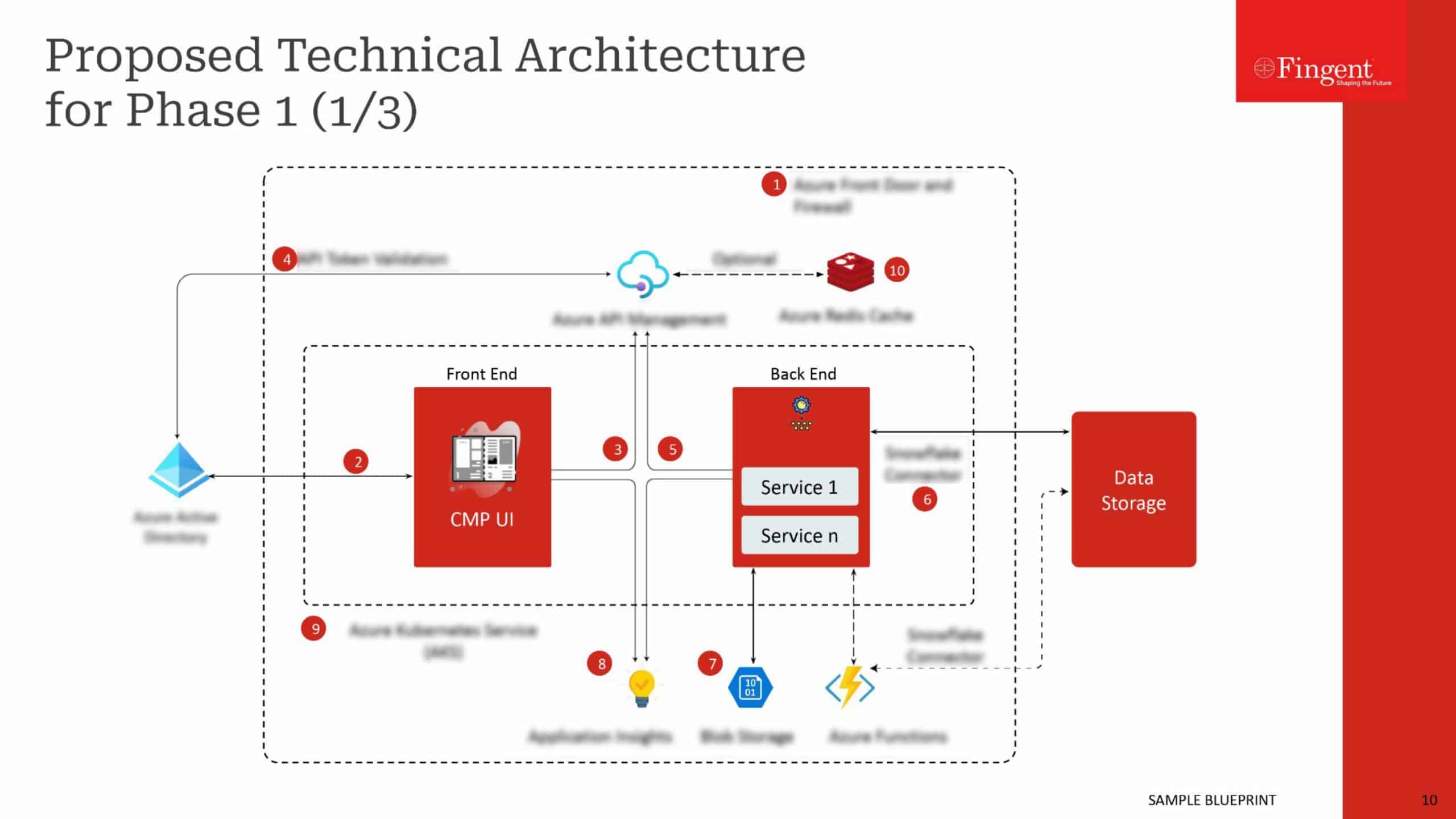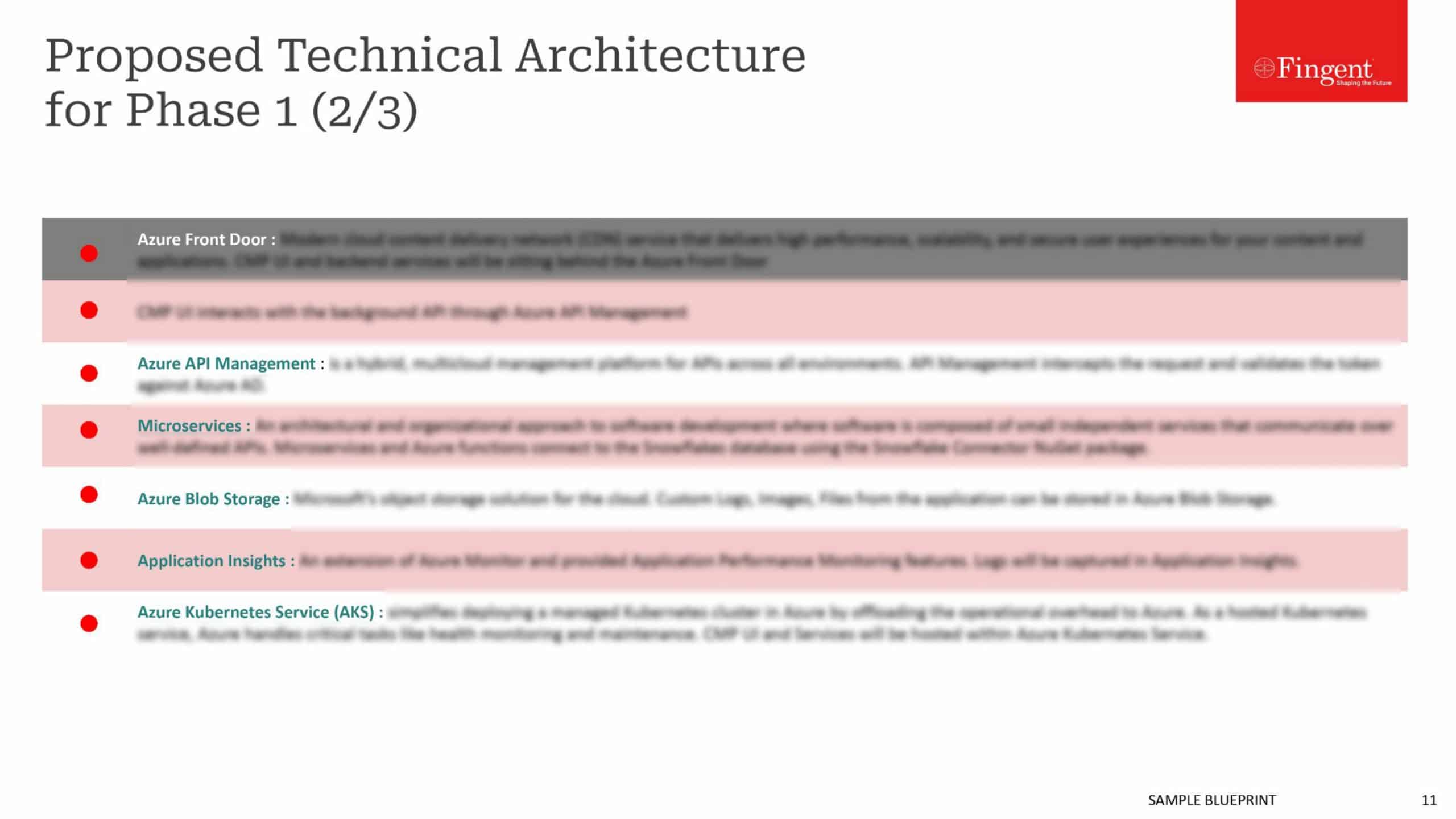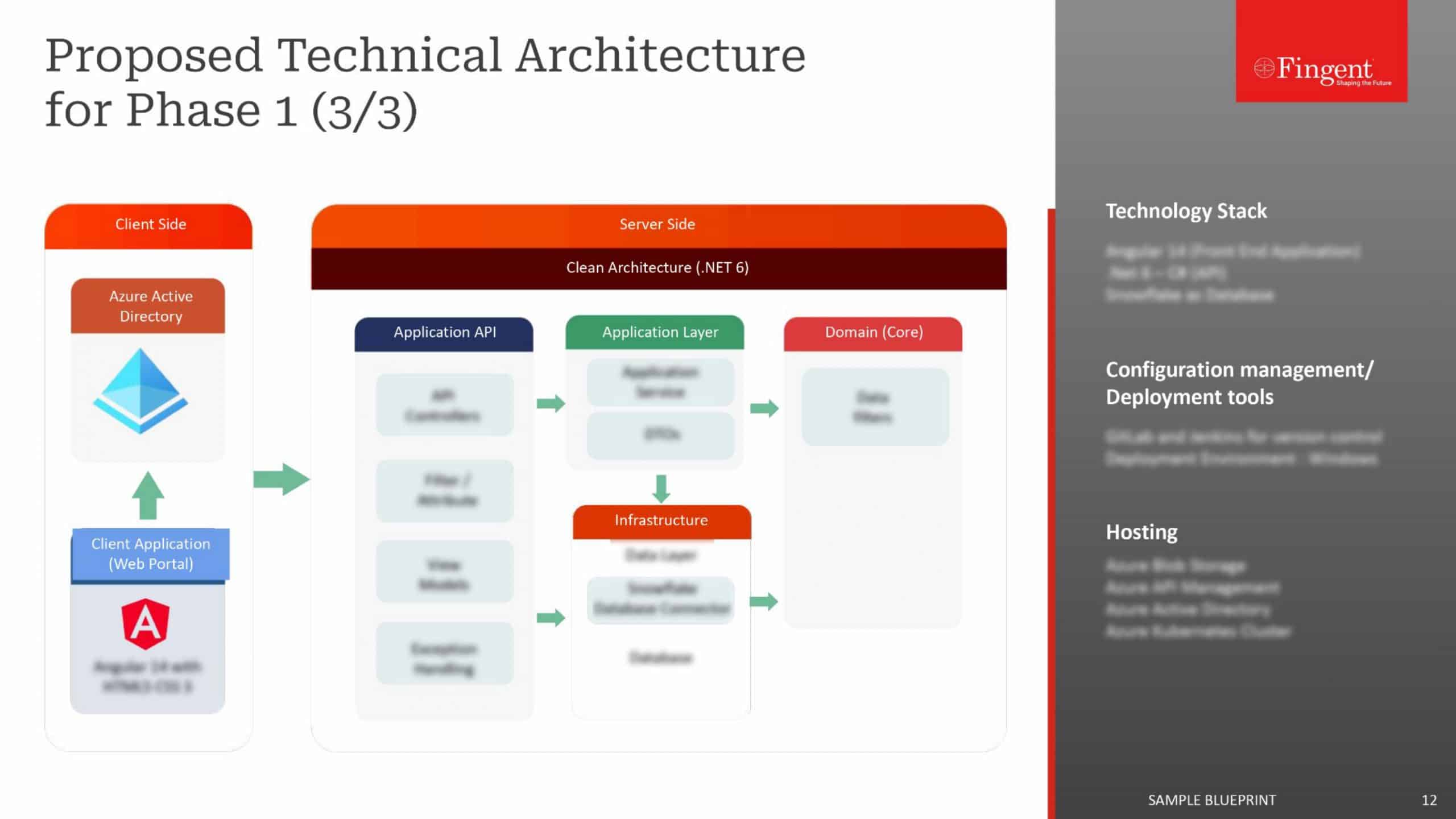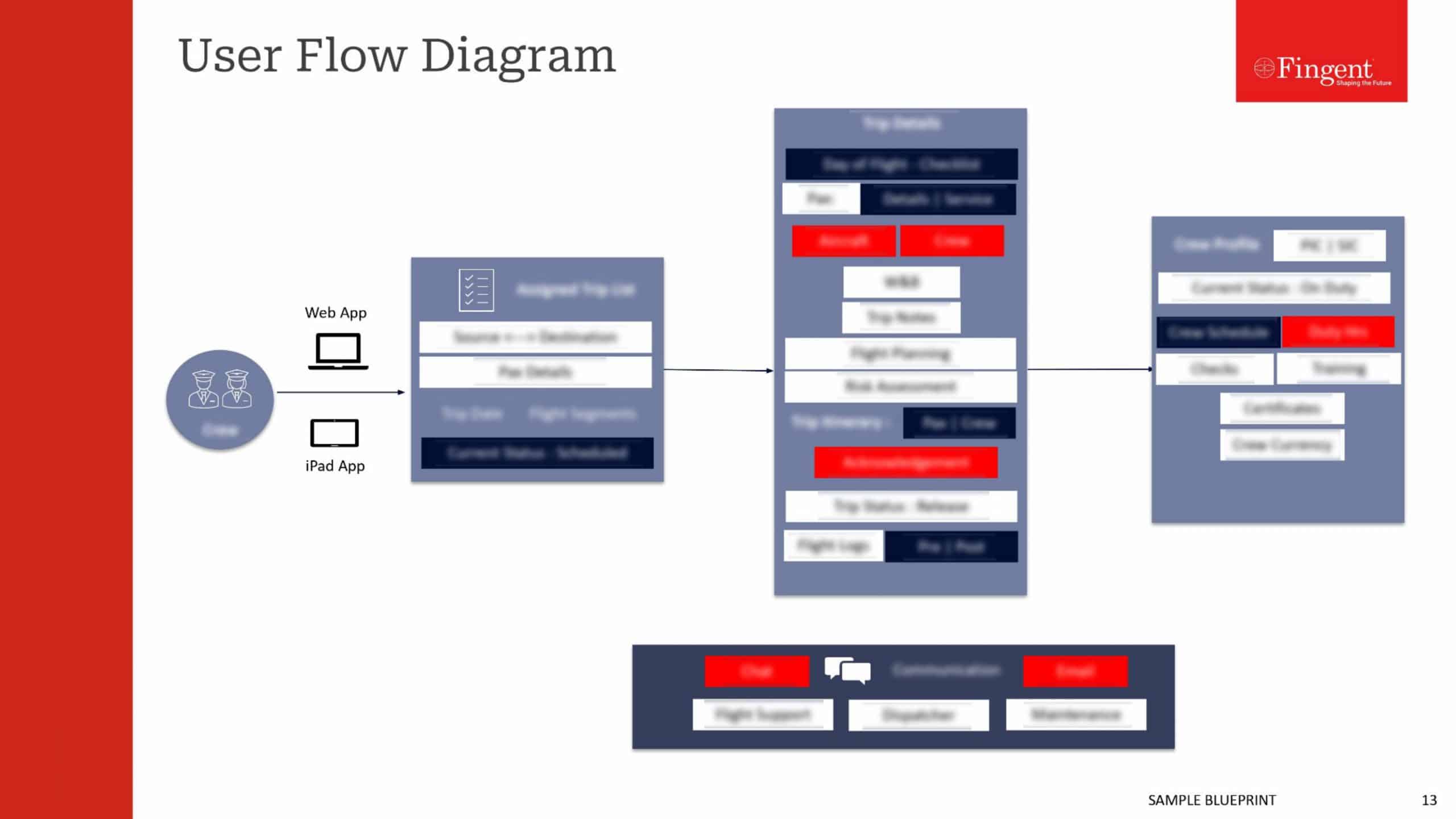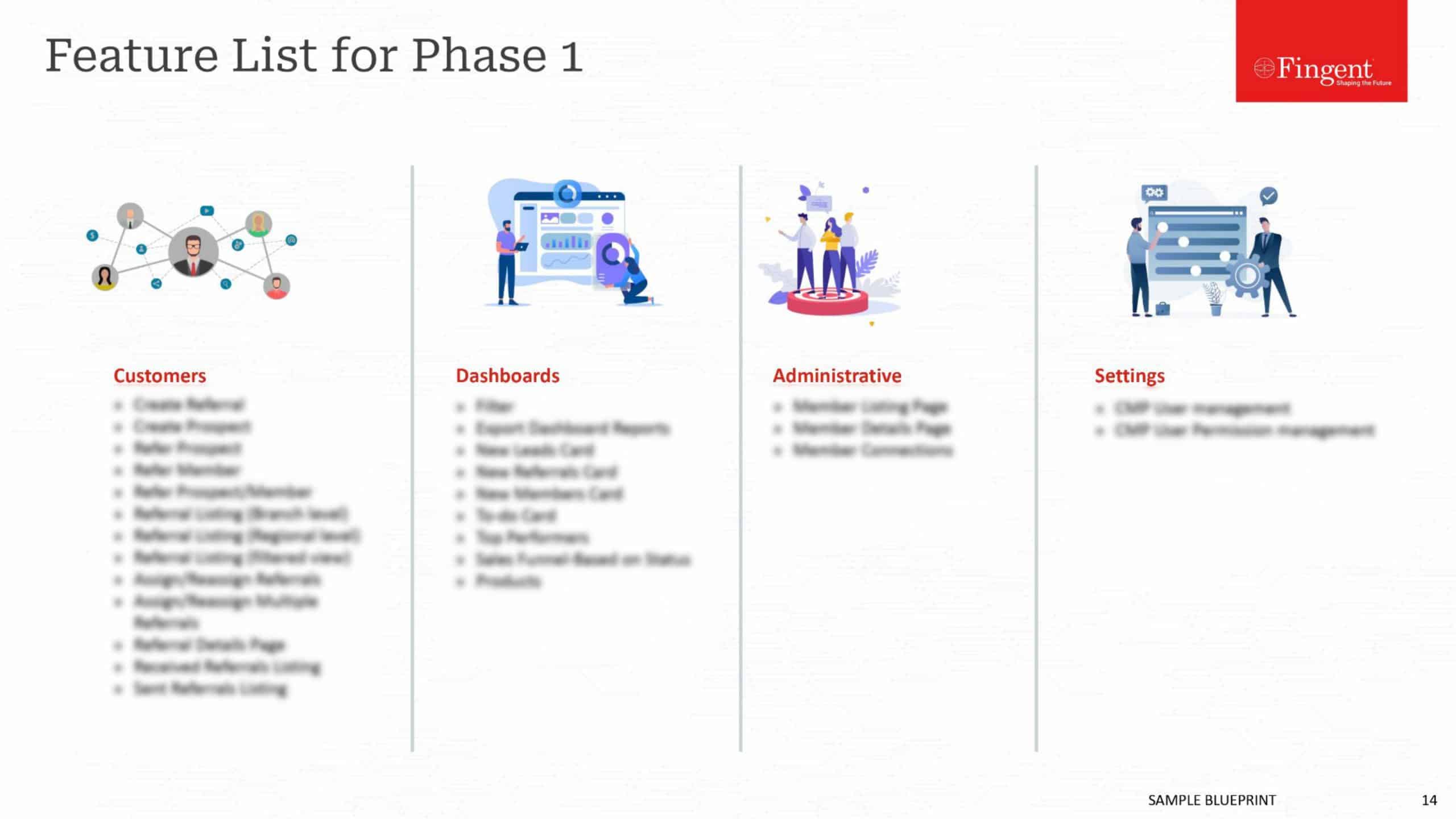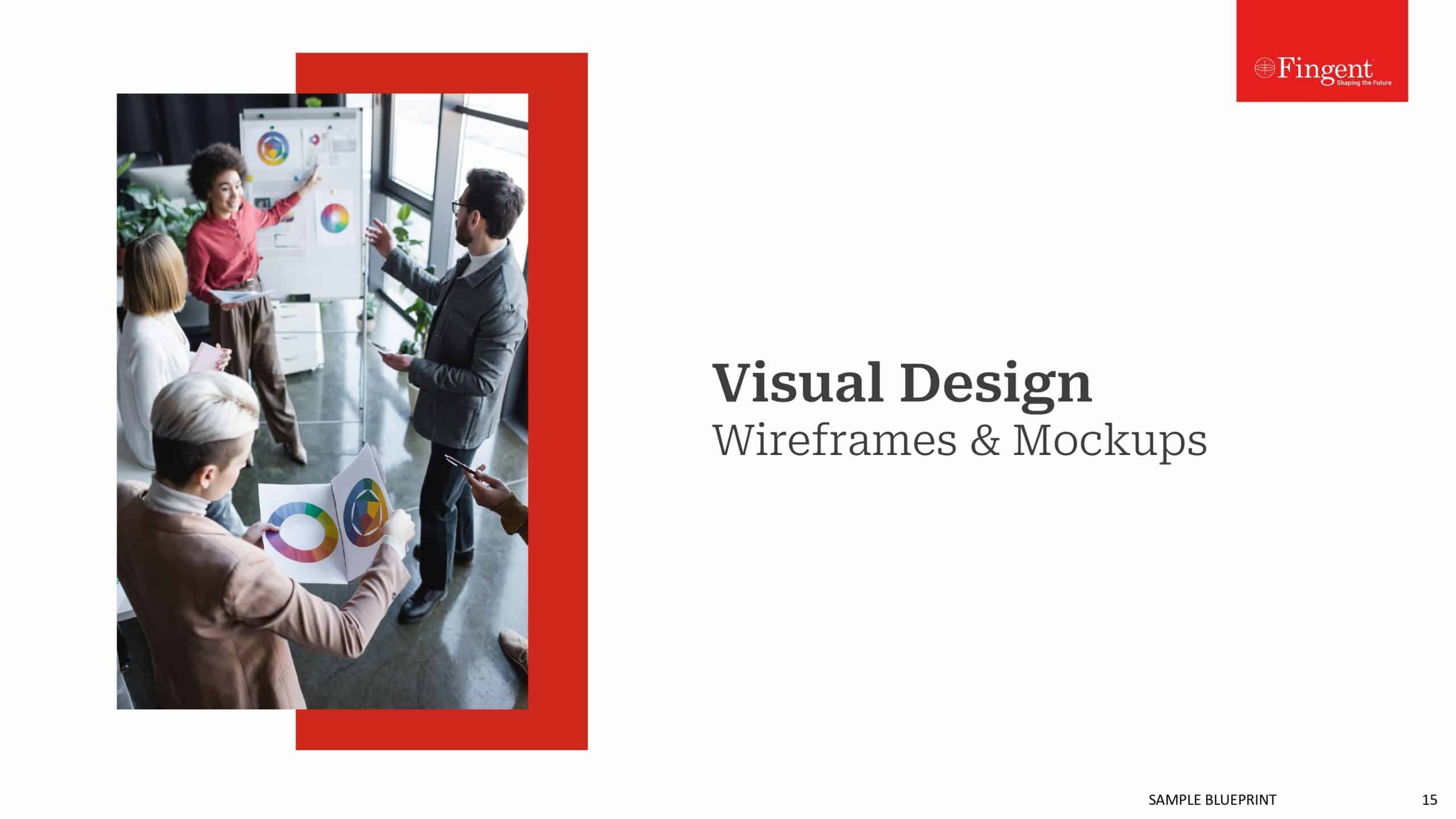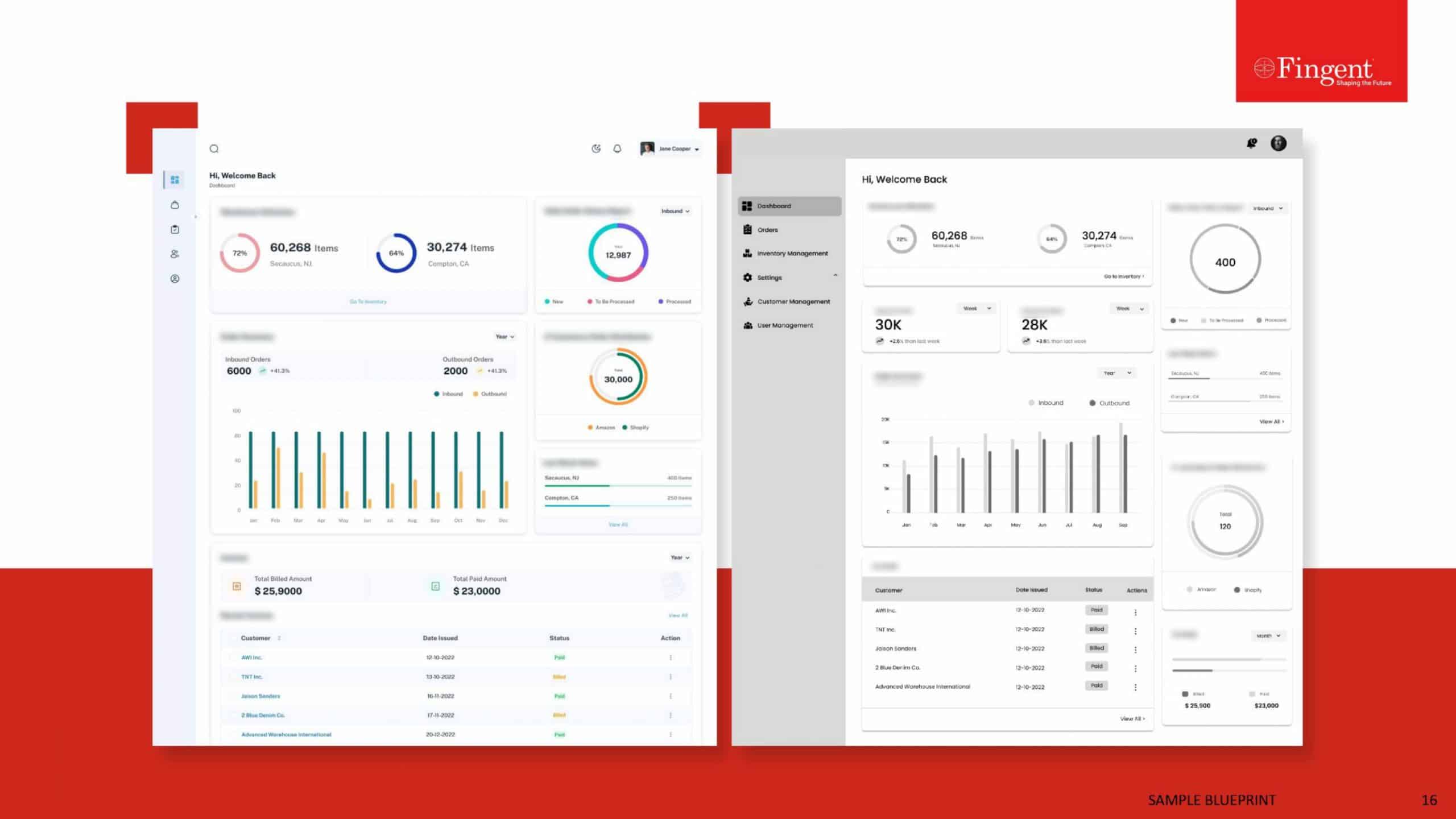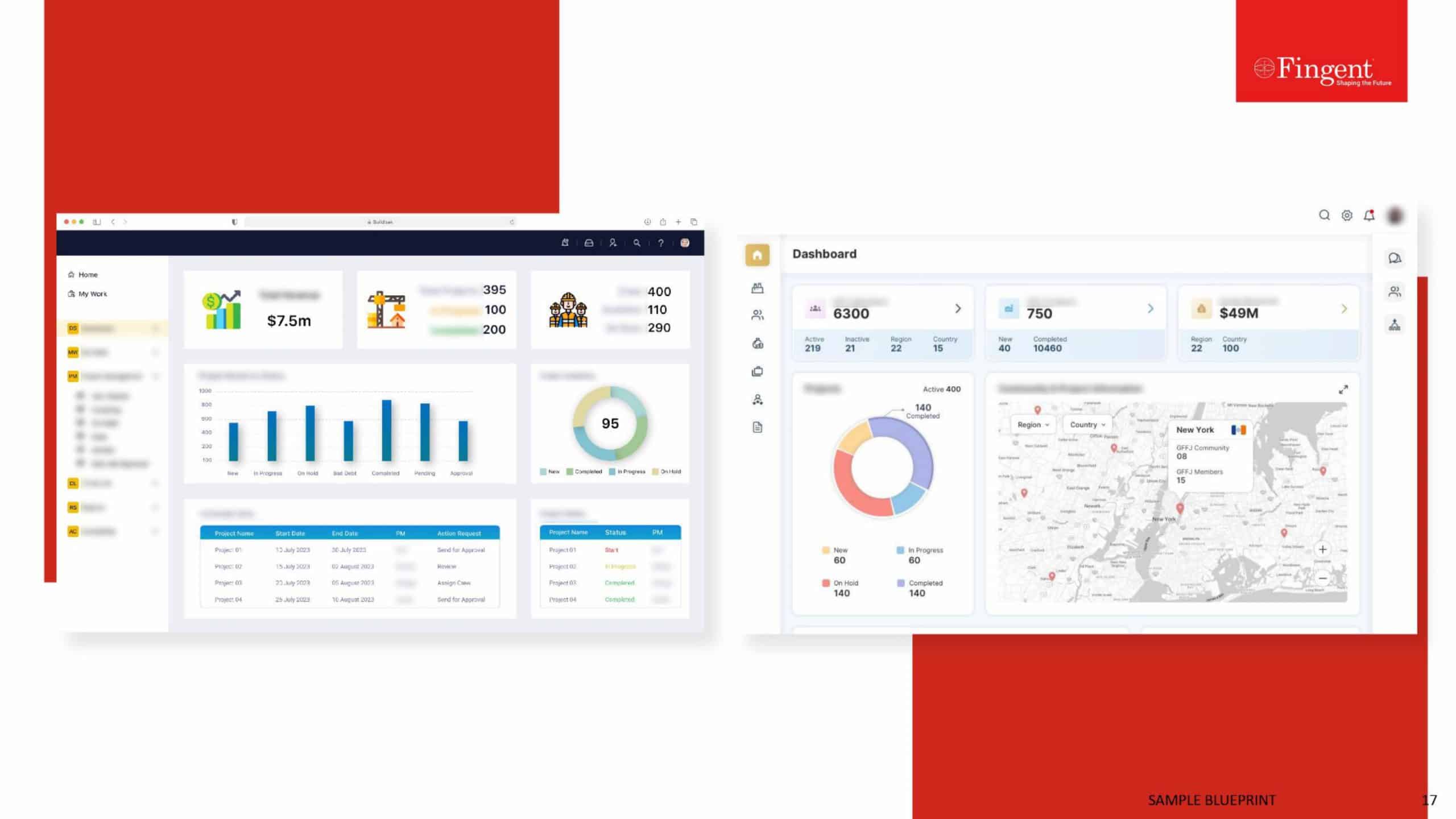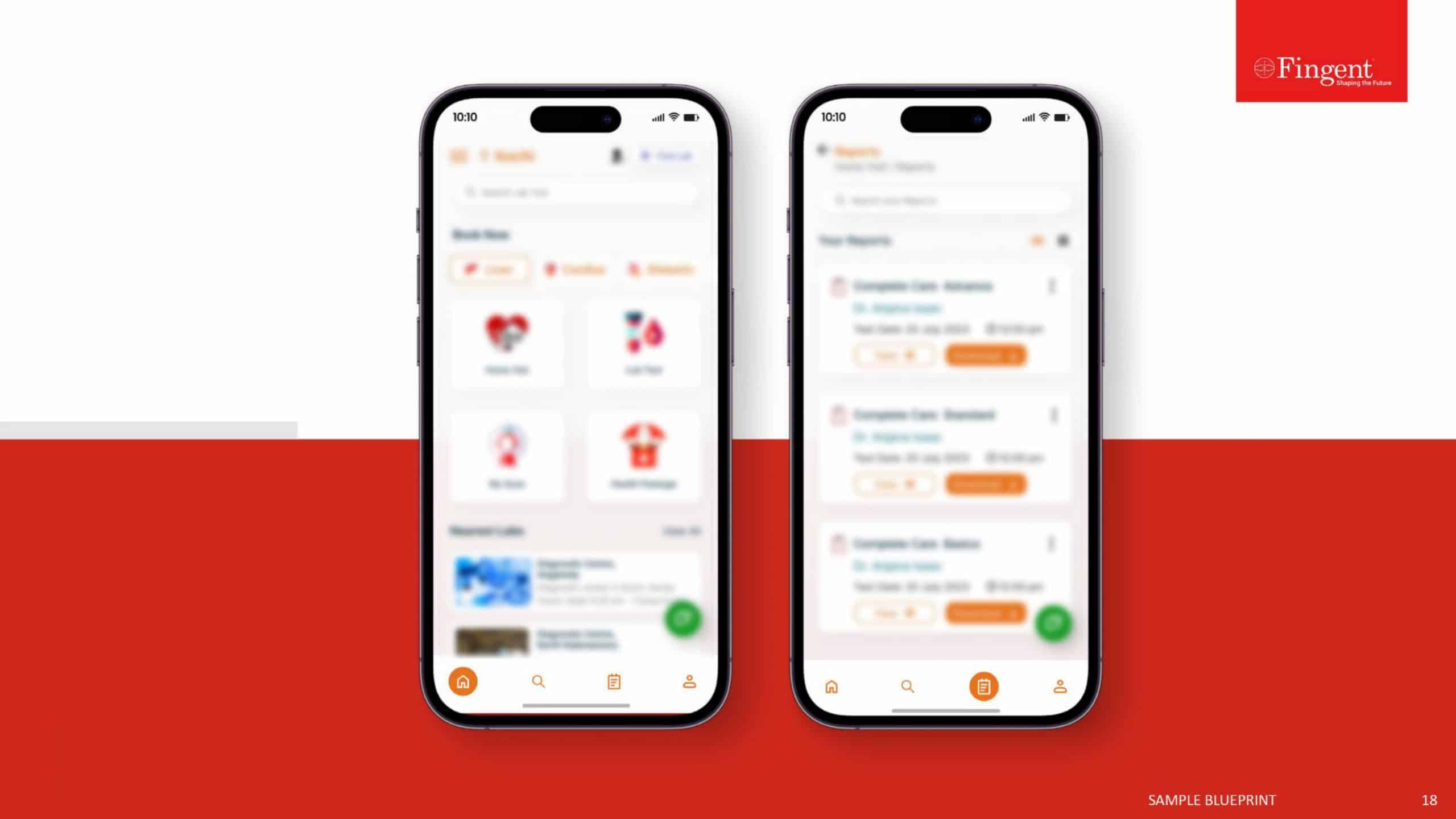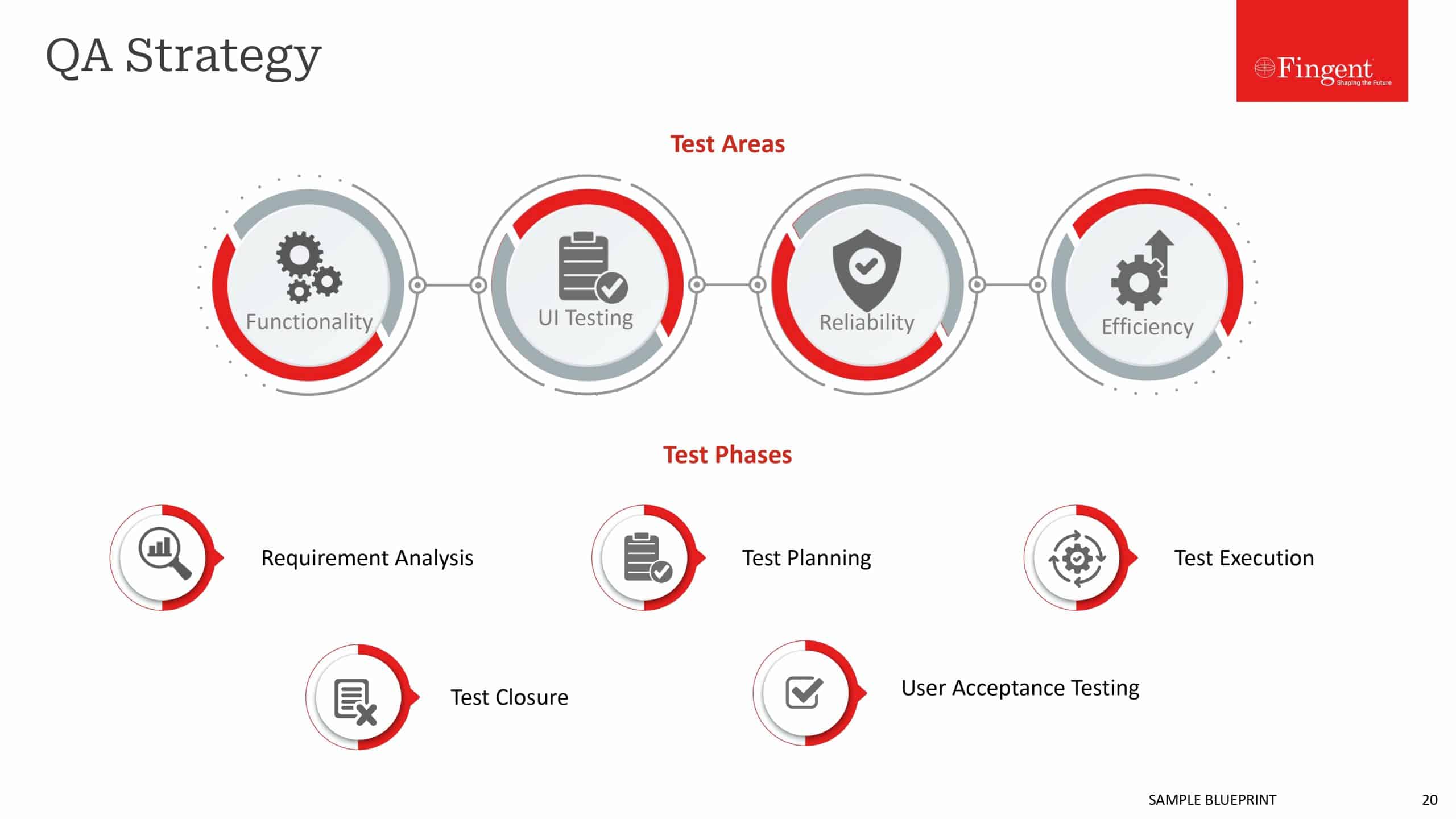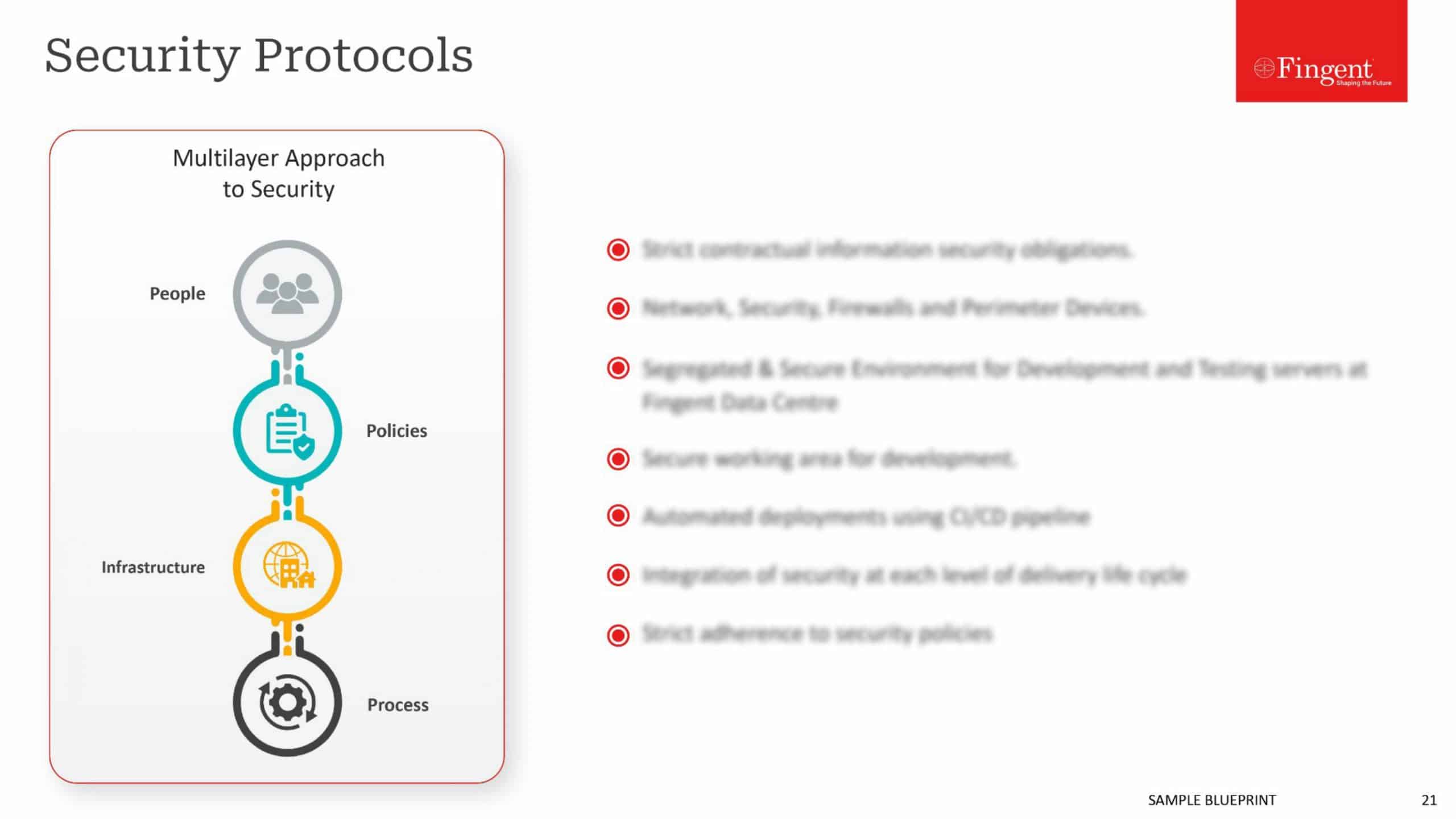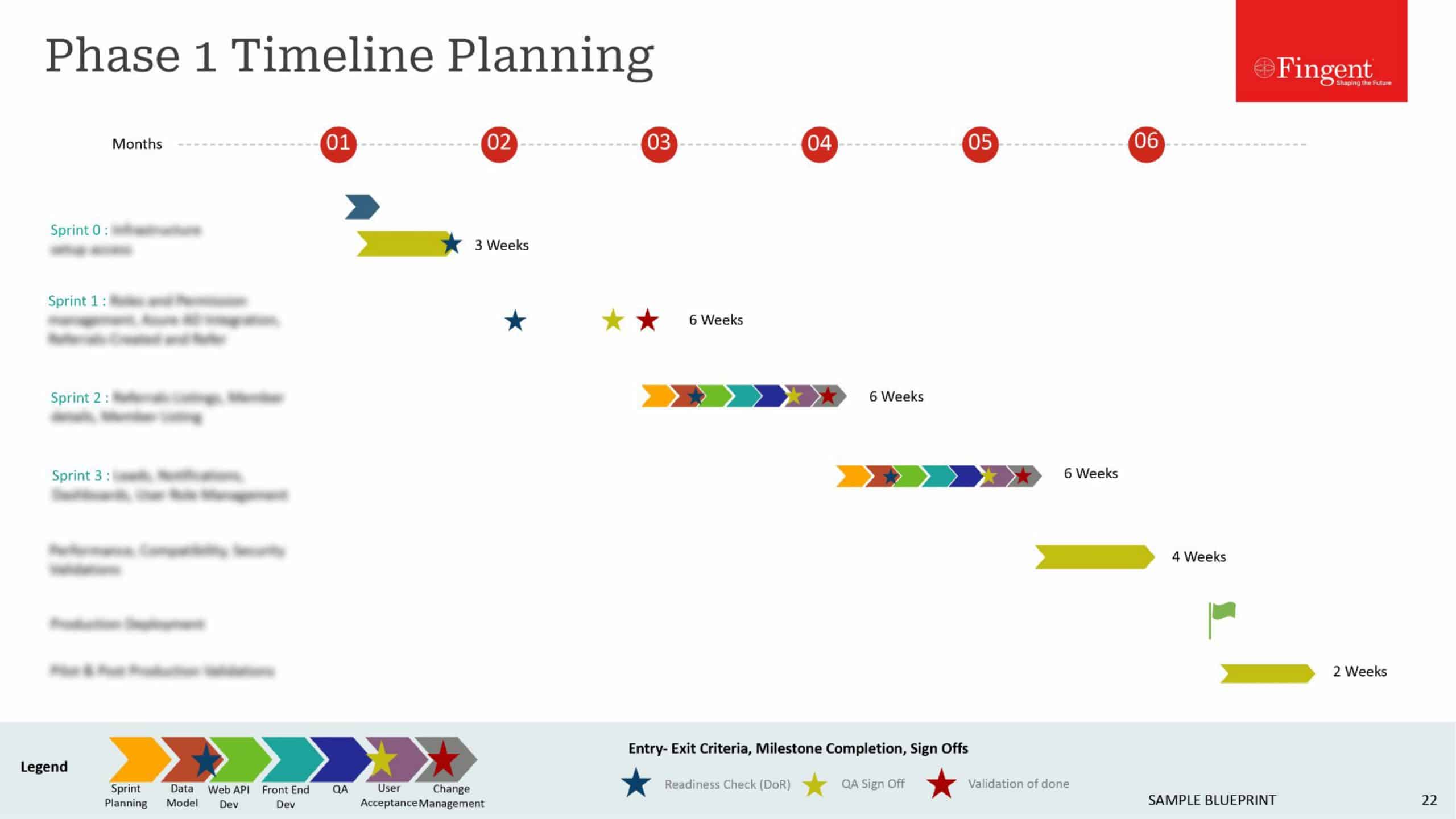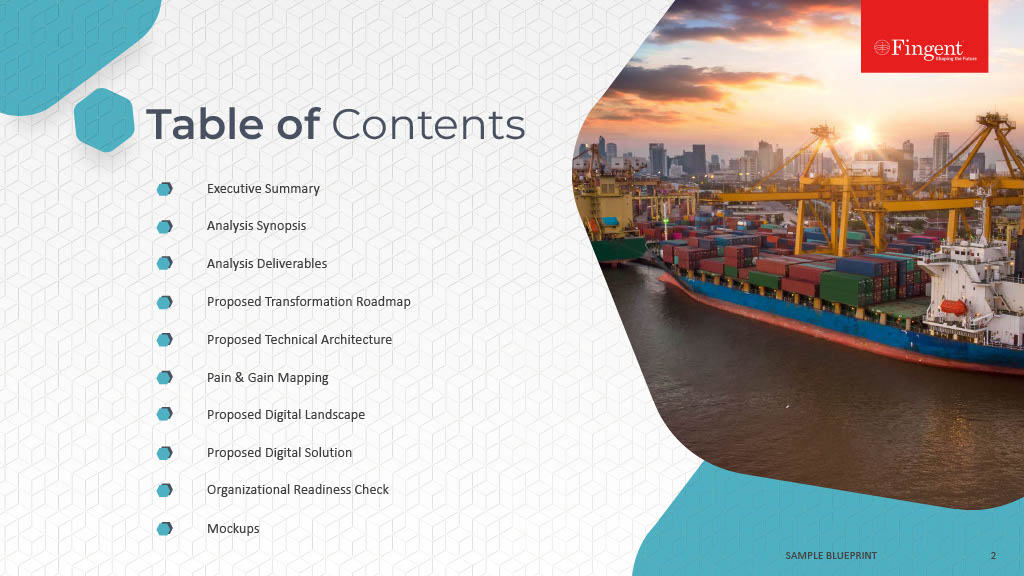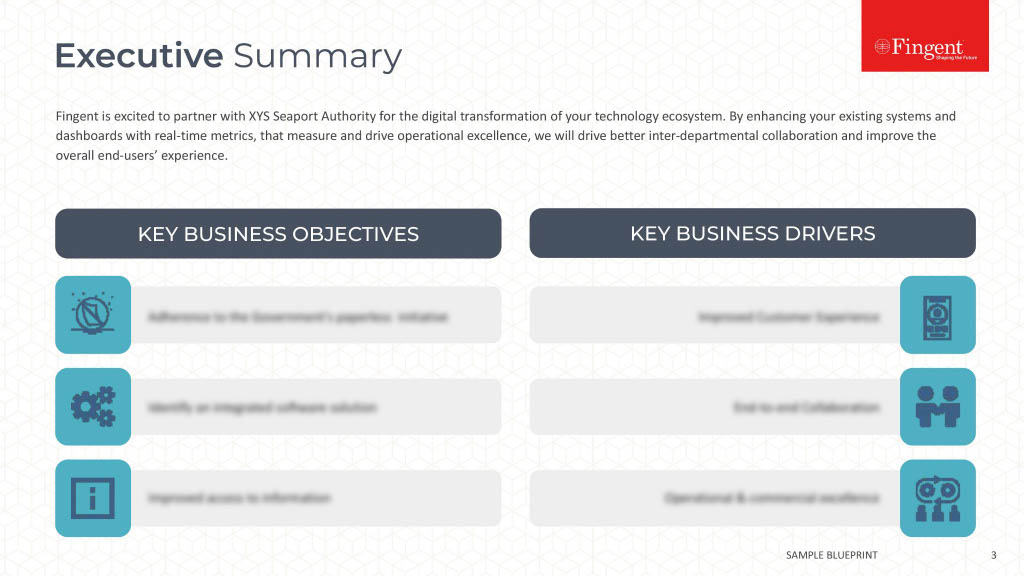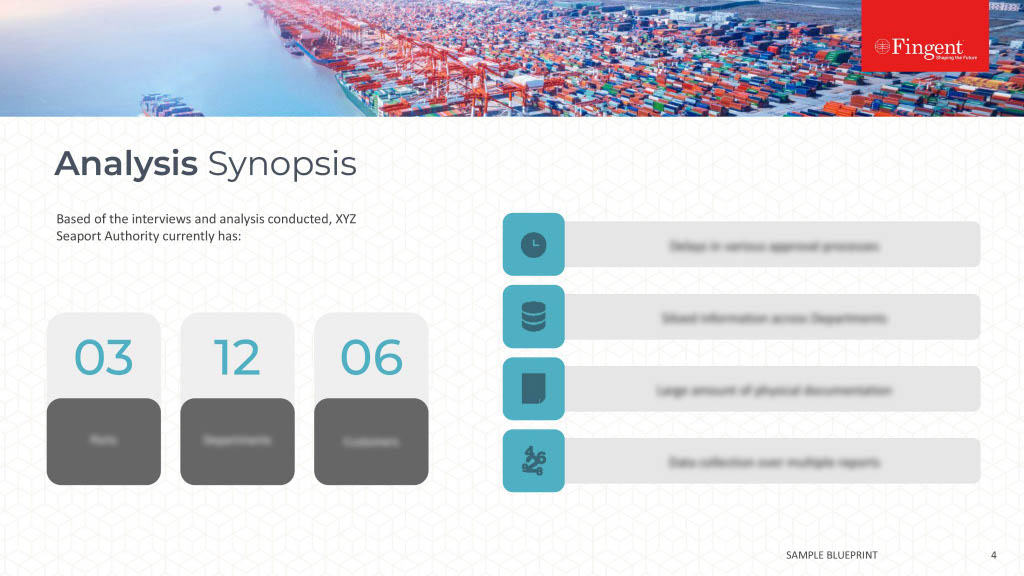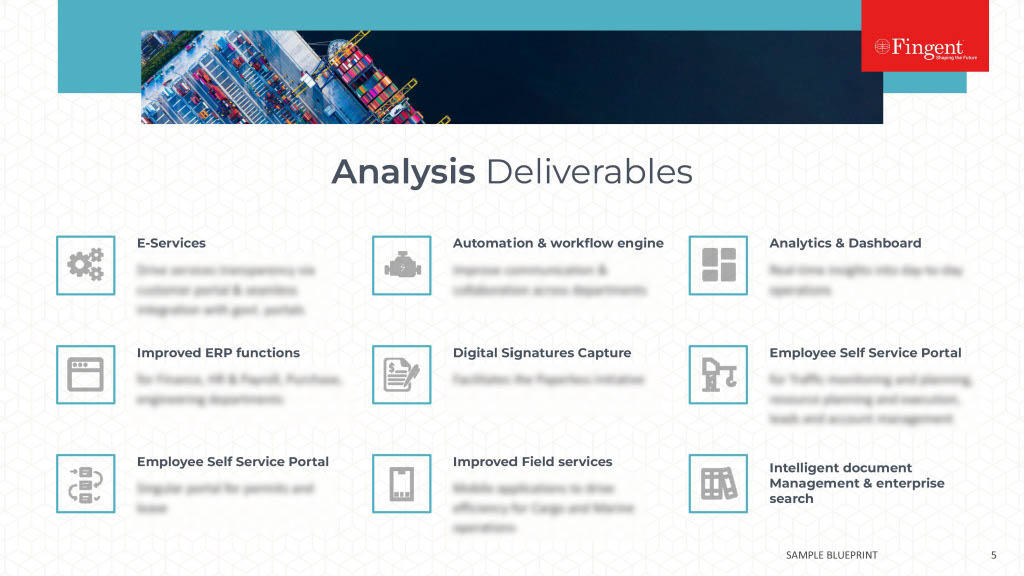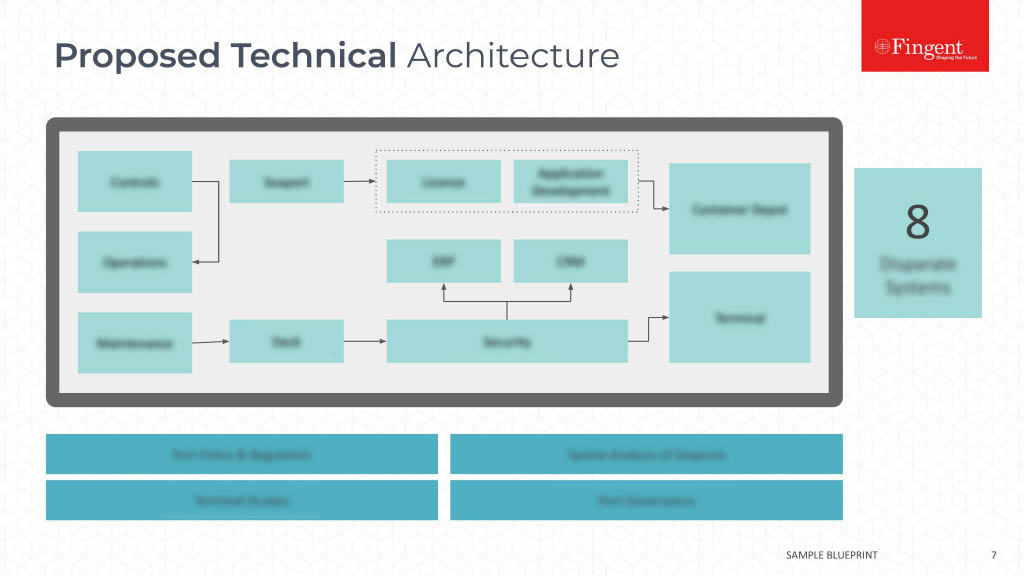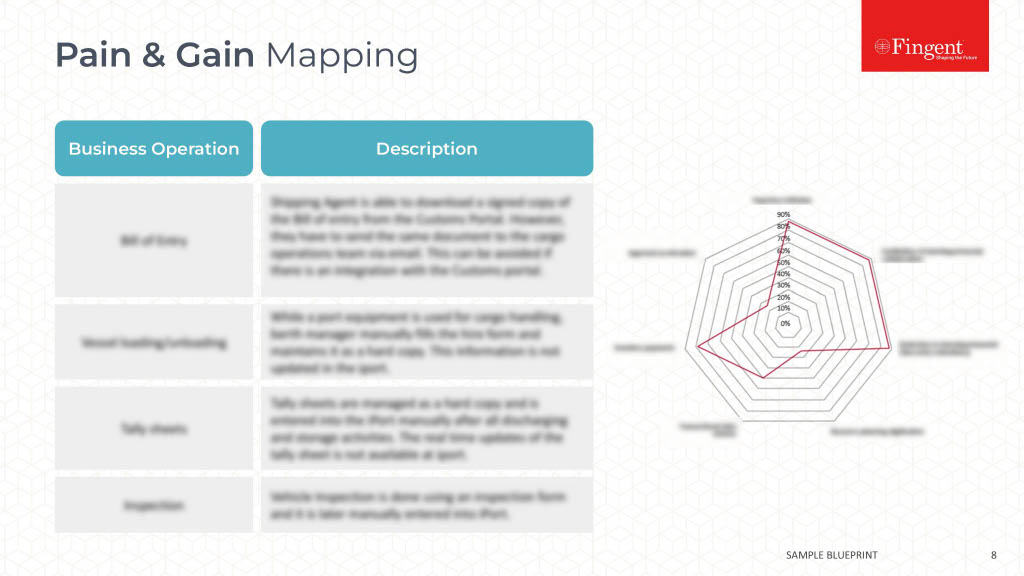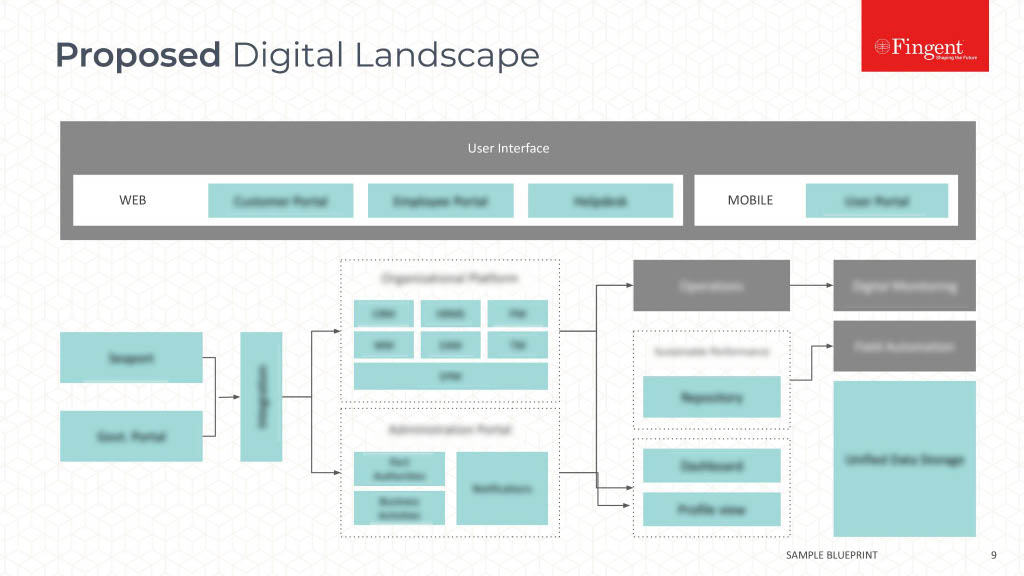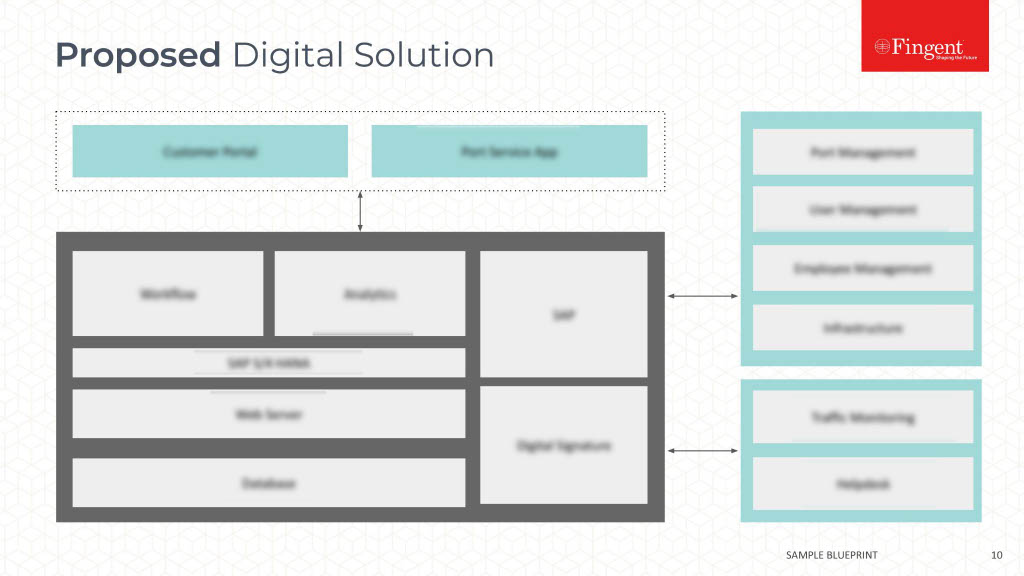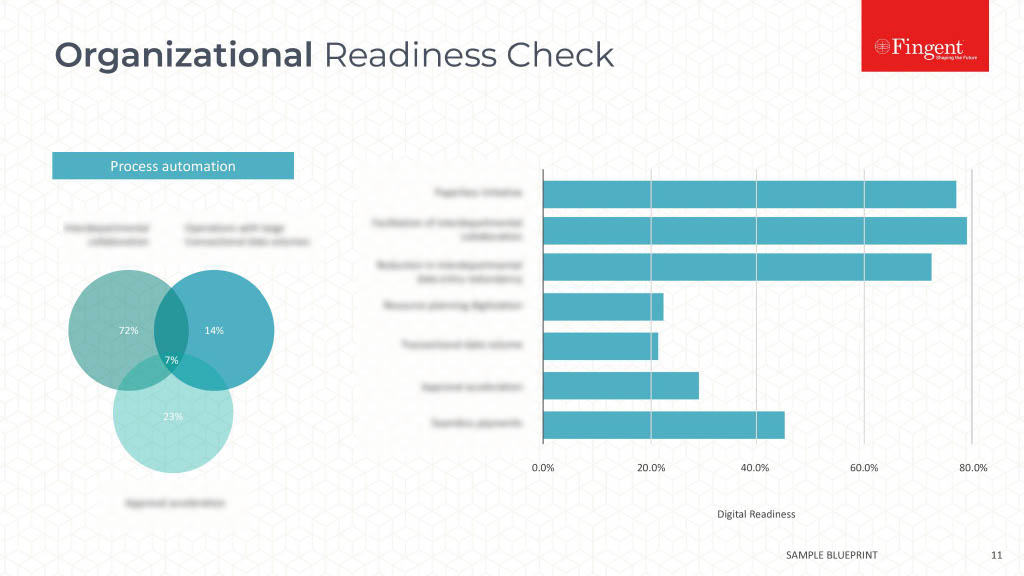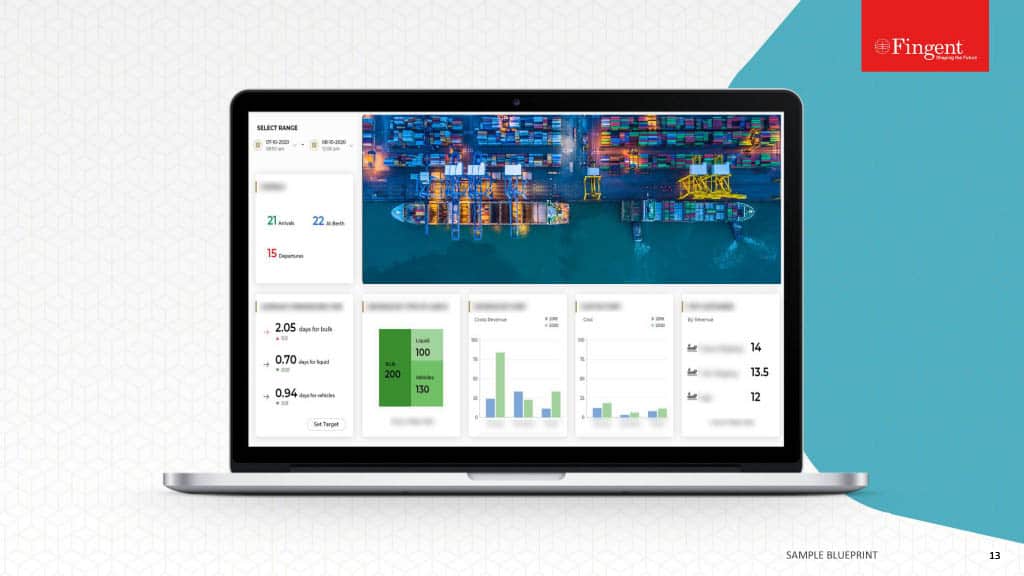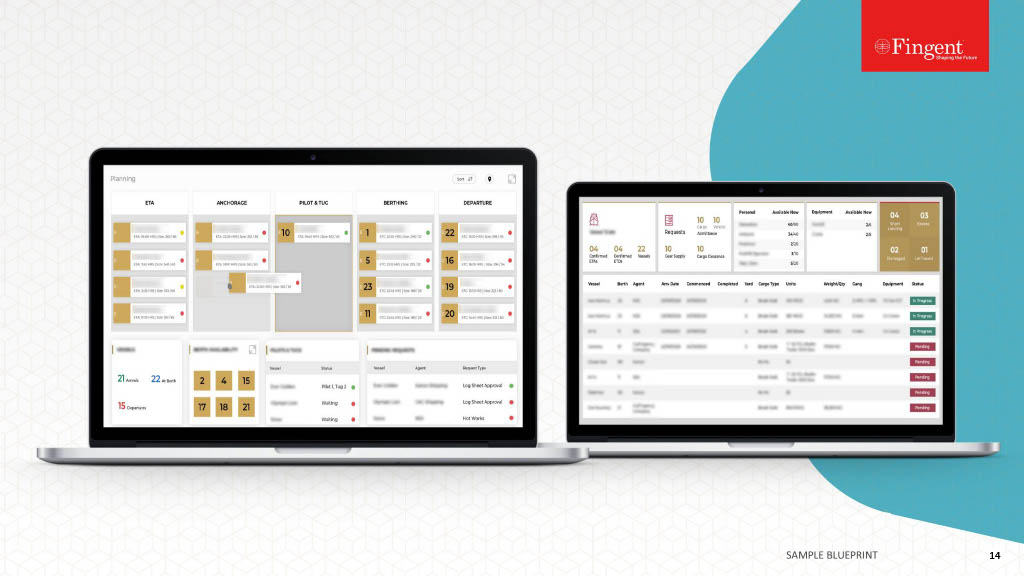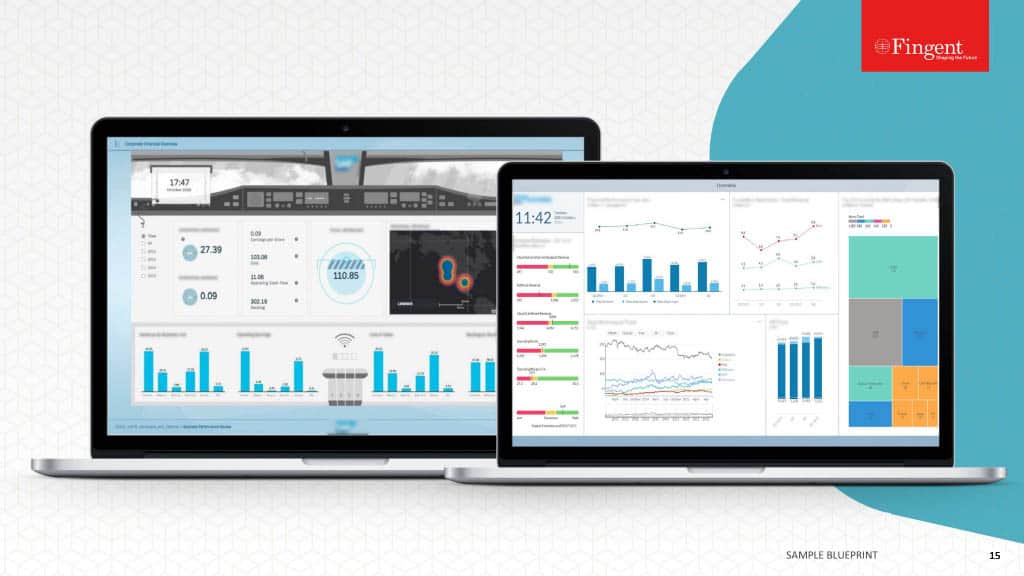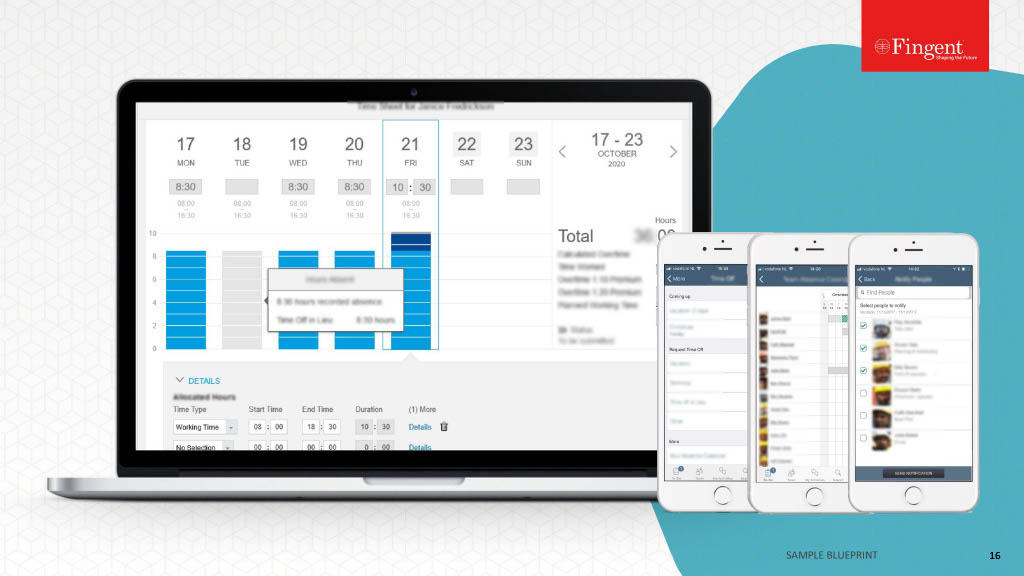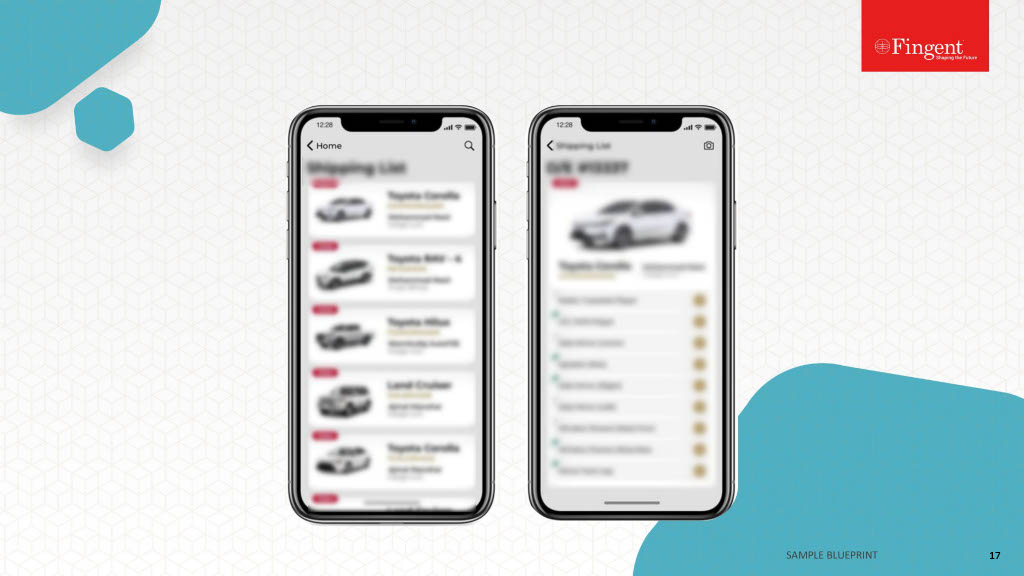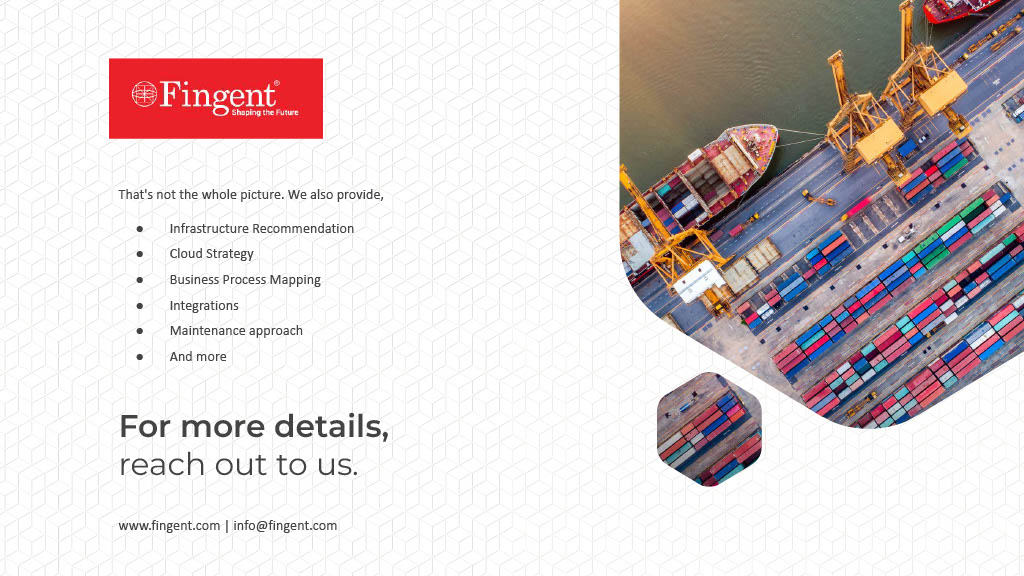Category: Digital Transformation
In this era of rapid digital transformation, new technologies have opened up opportunities and created challenges, fundamentally transforming customer experiences, operating models and the work environment.
While the scope, scale, and complexity of business technology has evolved at an exponential rate, sophisticated technology has also become more accessible to a wider audience. Such accessibility enables a thriving digital culture which can be a source of competitive advantages across all business functions – recruiting, training, sales, sourcing, manufacturing, logistics, marketing and more. While in the past, technology providers (like us at Fingent) predominantly worked with IT departments, today we often work with functions like finance, sourcing, HR, project management and logistics, with minimal or no involvement of the customer’s IT team.
More importantly, access to robust technology is also no longer exclusive to large enterprises. Commoditization, outsourcing, and good connectivity have driven down costs, making technology accessible to businesses of all sizes, across the globe.
By providing an attractive basis for innovation, improving cost efficiency and differentiation, the synergy between technology and business processes is no longer optional, but a must-have.
Studies reveal that 55% of startups have already adopted a digital business strategy compared to 38% of traditional enterprises.
While the specific technologies that can be leveraged for business growth, will vary widely across organizations, there are a few common themes that business leaders can consider.
The Cloud democratizes Information Technology
Cloud computing is really the internet as we use it today. Dropbox, One Drive, Facebook, INFINCE, AirBnB, Twitter, Uber…. Are all in the cloud. It is really an umbrella term that covers a variety of on-demand computing and storage services as IaaS (Infrastructure as a Service), PaaS (Platform as a Service) or SaaS (Software as a Service).
Related Reading: Choose the right Cloud service model for your Business
Cloud technologies help discard or avoid the need for physical IT infrastructure, and on-premise support structures for computing capabilities, by virtualizing these across server farms or data centers. Using cloud-based services providers, businesses can leverage IT assets as programmable resources, which are global and scalable on demand. This allows a business to access or lease computing resources and storage power far greater than what it may have been able to access on local infrastructure, while still being able to scale up or down in a cost-efficient manner.
Consider V Locker, an Australian firm providing automated locker solutions for freight deliveries. V Locker manages lockers for B2B customers across the globe from Australia, using IaaS (Infrastructure as a Service) and PaaS (Platform as a Service).
On the cloud, multi-tenancy enables effective resource utilization, reducing costs to make the cloud a cost-efficient option for most organizations. For e.g. SaaS (Software as a Service) Property Management service Simple Rent uses multi-tenancy to provide a low-cost, high quality offering to the commercial and residential rental business.
While the Enterprise IT spend on the cloud is relatively small, it is the fastest growing segment, slowly replacing on-premise systems. At one end of the spectrum, Oracle and Microsoft are slowly shifting legacy products to the cloud, pushing many large enterprises to follow suite. At the other end, solutions like Infince have taken enterprise cloud a step ahead by blending SaaS and IaaS for small/medium sized businesses, providing a cost-efficient, secure cloud-based alternative to expensive alternatives. The cloud makes robust enterprise technology accessible globally to businesses of all sizes without the need to invest in expensive infrastructure or large teams.
Data – Big, Small and everything in between
With the relentless digitization of business and society, we have access to extraordinarily large amounts of data. Transactional data (from digitized business processes via ERP, CRM, HRMS, POS, and similar systems), Social data (Facebook, LinkedIn, YouTube, Twitter and the like) and Operational data (from connected devices and IoT systems) can be leveraged to provide better customer experiences and improve operational efficiency. The key is not just to gather data, but to leverage it with analysis and insight. From an organizational perspective, this can require experts from multiple disciplines to work together to peel back multiple layers of data and insight.
Related Reading: Find out how Big Data is changing the Healthcare sector.
Success depends not on the indiscriminate application of technology to data, but on a coherent approach, of identifying critical data that matter, and using the right technology to generate relevant and actionable insights, delivered to key stakeholders in the value chain, in real time.
In the realm of marketing, successful big data analytics manifest as tracking everything a customer or prospect does and generating real-time alerts to the marketer or a front line executive dealing with the customer. For instance, if the customer walks into a store, the automated analytic solution alerts the sales executive immediately, and everything related to the customer, including their preferences, purchase history, and more, surfaces to the executive’s tablet. Likewise, if a prospects click on an ad or downloads an app, the marketer gets an alert immediately, enabling them to engage the customer proactively, to close the deal or move the prospect up the lifecycle.
From Digitization to Digitalization to Digital Transformation
Digitization is the conversion of analog physical objects into digital goods. Paper to PDF or Doc, or physical cash digitized to mobile payments, physical signatures to electronic signatures – these are all digital manifestations of non-digital objects. Digital goods have low marginal costs, are non rival, and can easily be bundled with other digital or non-digital products. Consider online user manuals, learning management systems. Usually the first step in an organization’s technology journey, Digitization sets the foundation to enable Digitalization and Digital Transformation.
“Digitization and digitalization are two conceptual terms that are closely associated and often used interchangeably in a broad range of literature. There is analytical value in explicitly making a clear distinction between these two terms.” – Scott Brennen and Daniel Kreiss
Digitalization is about leveraging technology to create, enable or transform a business process- usually leading to one or more of- the discovery or new opportunities, reduced risks or efficiency gains. For example, field service management solutions like ReachOutSuite help deploy digital forms to field technicians across various locations. It reduces the risks of revenue loss due to errors, inefficient scheduling and underprepared staff. This service also increases efficiency by maximizing staff utilization and getting more jobs done pre-staff. It further enables the identification of new opportunities by enabling techs and backend admins to understand customer experience better. Digitalization of business processes is par for the course these days with a plethora of packaged and custom built software available for enterprise planning, managing business finances, training, projects, customer management, and human resources.
Find how ReachOutSuite can make a work order manager’s life simpler.
- CRM systems coordinate business processes that are key to generating leads, converting them into prospects, and, subsequently, into regular customers. Additionally, CRM software solutions supply business managers with data processing and analytic tools to help refine marketing strategies, improve customer service and track overall organizational performance. Through centralization of business data, CRM software tools streamline the decision-making process and automate repetitive tasks.
- Project management software eliminates laborious paperwork and tedious planning processes. With the right tools, businesses can control projects costs and improve the efficiency of related operations. Technology automates most project management processes to make it affordable and practical for any type of business. The main benefits of implementing project management software include – Easier project planning, monitoring and tracking, Improved collaboration, Better organization, and future planning
- ERP systems boost productivity and promote business growth in two primary ways. First is automating business processes to improve accuracy and save time for all employees. Second, ERP systems unify data generated by the business and make it available to decision-makers and other managerial parties throughout th
e firm. It eliminates data sharing problems among departments and makes the information accessible to everyone.
Digital transformation is about leveraging digitization and digitalization to transform a business unit’s or an organization’s approach to business. This can involve one or more of – new business models, overhauling customer experience, radically different manner of service or product delivery. The transformation is driven by the business, and not by the IT team. For instance, consider Replika, which connects brick and mortar sales to the digital realm, transforming the way sales is managed for retail. Emerging technologies will create new business models that may be hard to understand or foresee today. For instance, digital securities based on blockchain based technologies can unbundle ownership of analog assets like property or gems, while making it possible to bundle diverse asset classes to create new portfolios for investment. Such digitization of previously illiquid assets creates new customers, new strategies and new business models that may not be possible to fully comprehend today.
Related Reading: Find out how INFINCE is the ultimate digital transformation for small business of today.
In conclusion
Technology is a disruptive force. In the current ever-changing and multifaceted business environment, technology can not only help improve your businesses’ agility but can also provide cost-effective means to innovate your products and services, improving customer experience. The key is to adopt the right tools and partners, while actively planning the change and deployment.
Stay up to date on what's new

Featured Blogs
Stay up to date on
what's new



Talk To Our Experts
Digital revolution has not just changed how businesses are perceived but also how businesses are performed. It meant a shift from the conventional means of operation to the one aided by technology. In today’s age, every aspect of a business from operations to management is run using digital tools. Such digital transformations has changed every industry and revolutionized the way of serving the customers, improve the competitiveness of the business and pushed forth its expansion into the global market.
Coleman Parkes Research in one of their surveys identifies that 82 percent of respondents have adopted digital technologies for redefining their businesses. This complete overhaul of business with the reinvention of business operations are affected by the advent of mobile, cloud, social, and big data analytics. So has the transcendence of a digital world helped grow businesses? If yes, what are the ways in which businesses can take advantage of the same?
Related Reading: Implementing a digital transformation strategy for your business requires adequate know-how of the varied process involved in the same. Know about the five crucial questions to consider before initiating your digital transformation journey here.
What are the innovative changes?
Early on, businesses built websites as a front for providing only information. With interactivity and the onset of the mobile revolution, sites and apps started to provide much more. They are used to offer services and products right at the doorstep of customers. The use of social media has enhanced the knowledge regarding what the customers like and what they seek. Businesses can use this medium to understand and tailor personalized experiences to provide real value to their customers.
Big Data analytics has changed the way businesses adapt and change. From decision making to predicting customer preferences and hiring the right skill sets, big data analytics has emerged as the game changer for businesses today by influencing how they deal their data. Instead of undertaking a market study, there is relevant data that tells what is working in the market and what is not.
The competitiveness
Each business that enters into a digital transformation is out there to compete every second. Imagine the new generation of customers who have everything at the tap of a button. Businesses need to be on their toes to deliver rich, real-time interactions with an element of personalization to keep their customers engaged. Also, the need to keep updating and innovating with respect to the competition is a necessity to save the business from running into the ground.
Read more: Fundraising Software For Nonprofits
The increased reach
Even though the competition increases with the digital transformation, businesses can take advantage of the fact that now they have reached a global audience. There is a market for the niche of products and services since customers have a way to access them easily. Also putting a step into innovation ensures that your business is at the forefront of achieving a profitable chunk out of the industry.
Improved avenues
Since transforming the business into a digital space is no longer an option, businesses should start utilizing the benefits of such a change. Pervasive digitization of services and products can be made to ensure that there are no barriers between the business and their customers. Also, traditional companies can start making efforts to revamp or add new services that are digitally available to increase their profits. Monetization from digital platforms and collaborations with partners can further help achieve better profits from an untapped source of customer relationships.
Related Reading: Take a look at the CIO’s opinions of digital transformation initiatives deployed across different businesses here.
How to make the most of this digital transformation?
In today’s day and age, no business is smaller or bigger, each of them competes in a virtual, digital space that offers fair ground for competition. Businesses should start looking at Big Data analytics and use the social media space to push their content to the customers. The idea is to be always supple, no matter how big or small your business is. Think like a startup at every step to understand the new technologies, the revolutionary changes, and be flexible to adopt them quickly. Having a digital core at the heart of your organization to manage and operate the business is the right way to go ahead in this modern digital era.
If your business is seeking to get into the race of digital transformation, it is important to act right now. Late adopters can have serious disadvantages since the competition is already in the domain. If you are looking to adopt a business model that utilizes a digital core, Fingent top custom software development company can help you to embrace the digital transformation with the best developers to get to the forefront of change.
Stay up to date on what's new

Featured Blogs
Stay up to date on
what's new



Talk To Our Experts
Artificial Intelligence (AI) is the rage now, but like all things tech, it is in a continuous state of evolution. Here is how Artificial Intelligence is expected to play out in 2024.
1. Complex AI-enabled chips in the Offing
The tremendous power of Artificial Intelligence, manifesting in the ability to undertake advanced mathematical calculations, number crunching, facial recognition, object detection, and other complex tasks, come with a hardware cost. Even the fastest and most advanced CPU is inadequate to improve the speed of training an AI model. Seamless execution of AI models requires additional hardware, in the form of specialized processors to complement the CPU.
Leading chip manufacturers such as AMD, Intel, NVIDIA, Qualcomm, and others, however, are working on removing the limitation, and are on the cusp of rolling out specialized chips that speed up the execution of AI-enabled applications. Hyperscale infrastructure companies such as Google, Amazon, Microsoft, and Facebook are also increasing investments in custom chip development. These new chips would be based on field programmable gate arrays (FPGA) and application specific integrated circuits (ASIC) and optimized for specific use cases and scenarios.
Needless to say, the new chips in the offing would make high-performance computing tasks such as query processing and predictive analytics very fast and seamless. Such chips would find application in a host of industries such as healthcare, automobile, and more.
Some of the early bird initiatives, such as Project Nitro from Amazon, Cloud TPUs from Google, Project Brainwave from Microsoft, Intel Myriad X VPU is a portent of the things to come in future.
2. Rise of ONNX to Facilitate Interoperability among Neural Networks
Developing workable AI based neural networks depends largely on selecting the right framework. While plenty of choices exist as to frameworks, developers are hamstrung by the lack of interoperability among such frameworks. This holds true for all the popular frameworks in vogue, including TensorFlow, Caffe2, Apache MXNet, PyTorch, Microsoft Cognitive Toolkit, and others.
Industry biggies such as AWS, Facebook and Microsoft are however are working on it, and have collaborated to build Open Neural Network Exchange (ONNX), which makes it possible to reuse trained neural network models across multiple frameworks.
ONNX is all set to become an essential technology for the industry in coming years, adopted by the stakeholders in a big way. Windows 10 ships already with ONNX runtime and Intel’s OpenVINO toolkit already supports ONNX, indicating the trend.
3. Automated Machine Learning to Gain Prominence
Machine Learning holds unbound promise but developing models is hard work, and the highly advanced expertise required stifles possibilities.
AutoML is however all set to change things. Applied the right way, it would empower business analysts and developers to evolve machine learning models capable of addressing complex scenarios without having to go through the usually arduous and vexatious process of training ML models, or going through elaborate workflows. Business analysts could focus on the business problem on hand, rather than worry about process and workflow.
AutoML offers the same level of flexibility that cognitive APIs perform, but also offer high portability and ability to co-opt custom data.
DataRobot, Google Cloud AutoML, Microsoft Custom Cognitive APIs, Custom Entities for Amazon Comprehend are some of the AutoML solutions already launched. The popularity of these tools indicates widespread popularity for AutoML in future.
4. Automation of DevOps through AIOps
AIOps represent the convergence of AI and DevOps. Such a convergence, which is all set to go mainstream, will benefit public cloud vendors and enterprises considerably.
Modern applications and infrastructure generate considerable log data, generated by hardware, server and application software, operating systems, and other sources. Such data finds a use for indexing, searching, and analytics, and is also aggregated and correlated to find insights and patterns. The application of machine learning models to such datasets makes IT operations proactive. Business managers and other stakeholders obtain insights in real time, allowing prompt and timely action. Enterprises could, for instance, leverage the improved and real-time intelligence to perform precise and accurate root cause analysis.
Some of the AIOps based tools already in vogue include Amazon EC2 Predictive Scaling, Amazon S3 Intelligent Tiering, Moogsoft AIOps, and Azure VM resiliency.
5. The rise of Virtual Agents
Businesses have started using Artificial Intelligence powered chatbots in increasing numbers. Chatbots answer questions, qualify sales leads and assist check out for online customers, among other applications. This year is likely to see an upgrade from chatbots to AI-powered virtual agents capable of handling even more complex customer service tasks, with even a face and personality of their own.
As a portent of things to come, Ava, Autodesk’s virtual agent, comes with a female face and a powerful persona that resonate the company’s brand image. Needless to say, such virtual agents are much more effective than human agents.
6. Increasing Role of Artificial Intelligence in Cyber Defense
Cybercrime has been a major issue for several years now. Cybercriminals target cloud infrastructure, IoT, and other cyber assets at will. Coming days will see an increasing application of Artificial Intelligence to fight cybercrime and keep cyber networks secure.
Artificial intelligence and machine learning are already applied to pick up subtle indicators of abnormal activities, detect online enemies in real time, and nip cyber threats in the bud.
7. AI to Power Smarter Retail Recommendations
The advancements in Artificial intelligence enable businesses and marketers to develop models that would recommend products based on not just the customer’s browsing history, but also the tone and sentiment. In future, companies will embrace AI-based solutions to offer their customers highly personalized shopping experiences. Such experiences would expand beyond e-commerce to brick and mortar stores as well, through digital interfaces.
It is interesting times ahead for AI. Smart enterprises would do well to tag tech companies who keep themselves abreast with the latest developments in this red-hot emerging technology and develop solutions to apply it to roll out workable solutions.
Related Reading : Unconventional Ways Artificial Intelligence Drives Business Value
Stay up to date on what's new

Featured Blogs
Stay up to date on
what's new



Talk To Our Experts
The Healthcare sector is booming at a faster rate and the necessity to manage patient care and innovate medicines has increased synonymously. With the rise in such needs, newer technologies are being adopted in the industry. One such major change that might take place in the future is the use of Big Data and Analytics in the Healthcare sector.
According to an International Data Corporation (IDC) report sponsored by Seagate Technology, it is found that big data is projected to grow faster in healthcare than in sectors like manufacturing, financial services or media. It is estimated that the healthcare data will experience a compound annual growth rate (CAGR) of 36 percent through 2025.
Market research have shown that the global big data in the healthcare market is expected to reach $34.27 billion by 2022 at a CAGR of 22.07%. Globally, the big data analytics segment are expected to be worth more than $68.03 billion by 2024, driven largely by continued North American investments in electronic health records, practice management tools, and workforce management solutions.
Here are 5 ways in which Big Data can help and change the entire scenario of the Healthcare sector.
1. Health Tracking
Big Data and Analytics along with the Internet of Things (IoT), is revolutionizing the way one can track various user statistics and vitals. Apart from the basic wearables that can detect the patient’s sleep, heart rate, exercise, distance walked, etc. there are new medical innovations that can monitor the patient’s blood pressure, pulse Oximeters, glucose monitors, and more. The continuous monitoring of the body vitals along with the sensor data collection will allow healthcare organizations to keep people out of the hospital since they can identify potential health issue and provide care before the situation goes worse.
2. Reducing Cost
Big Data can be a great way to save costs for hospitals that either over or under book staff members. Predictive analysis can help resolve this issue by predicting the admission rates and help with staff allocation. This will reduce the Rate of Investment incurred by hospitals and in fact help utilize their investment to the max. The insurance industry can save money by backing wearables and health trackers to ensure that patients do not spend time in the hospital. It can save wait times for patients since the hospital will have adequate staff and beds available as per the analysis all the time. Predictive analytics also helps cut costs by reducing the rate of hospital readmissions.
According to a recent report by the Society of Actuaries, 47% of healthcare organizations are already using predictive analytics. It is also noted that over 57% of healthcare sectors believe that predictive analytics will save organizations 25 percent or more in annual costs over the next five years.
Healthcare & Big Data Facts: McKinsey & Company report states that after 20 years of steady increases, healthcare expenses now represent 17.6% of GDP, ie. nearly $600 billion more than the expected benchmark for the U.S. size and wealth.
3. Assisting High-Risk Patients
If all the hospital records are digitized, it will be the perfect data that can be accessed to understand the pattern of many patients. It can identify the patients approaching the hospital repeatedly and identify their chronic issues. Such understanding will help in giving such patients better care and provide an insight into corrective measures to reduce their frequent visits. It is a great way to keep a list and check on high-risk patients and offer them customized care.
Read more: Healthcare Technology and Mobile Apps
4. Preventing Human Errors
A lot many times it has been noted that the professionals tend to either prescribe a wrong medicine or dispatch a different medication by mistake. Such errors, in general, can be reduced since Big Data can be leveraged to analyze user data and the prescribed medication. It can corroborate the data and flag potential out of place prescription to reduce mistakes and save lives. Such software can be a great tool for physicians who cater to many patients in a day.
Healthcare & Big Data Facts: The Centers for Medicare and Medicaid Services prevented more than $210.7 million in healthcare fraud in one year using predictive analytics.
5. Advancement in Healthcare Sector
Apart from the current scenario, Big Data can be a great benefit for advancement in science and technology. For Healthcare, Artificial Intelligence, such as IBM’s Watson can be used to surf through numerous data within seconds to find solutions for various diseases. Such advancement is already in progress and will continue to grow with the amount of research collected by Big Data. It will not only be able to provide accurate solutions, but also offer customized solutions for unique problems. The availability of predictive analysis will assist patients traveling to a particular geographical location by studying similar patients in that area.
Healthcare & Big Data Facts: Effective use of big data could add $300 million per year to the healthcare industry.
Thus, to sum up, Big Data increases the ability of the healthcare sectors to:
- Predict Epidemics
- Cure Disease
- Improve Quality of Life
- Increase Preventable Care
- Begin Early Preventive Care
- Spot Warning Signs Sooner
Numerous studies and researches prove that technology has tremendously transformed the healthcare sectors. Professor and researcher Ronda Hughes too explains in her research how big data is improving health services.
Improving health outcomes with big data | Source : TEDxUofSC
Although most part of Big Data generated is not fully utilized currently due to limitations of the toolset and funds, it is definitely the future. Invest in the future and leverage Big Data Analytics to be a part of the evolving Healthcare Industry by partnering with Fingent, a top custom software development company with extensive experience in this domain.
Related Reading: Find out how big companies are using the power of Big Data to enhance customer experience.
Supercharge your field operations with ReachOut
Cloud-based field service platform to optimize service delivery for efficiency and cost savings. Schedule jobs, dispatch technicians, generate tickets, quotes, invoices & more.
Start NowStay up to date on what's new

Featured Blogs
Stay up to date on
what's new



Talk To Our Experts
Artificial Intelligence is revolutionizing our lives. What used to conjure up images of robots taking over the world, is now a household word. Recommendation engines are reading our minds, virtual assistants are listening to our voices, and AI insights are transforming our businesses. AI is definitely here, and this blog will show you how.
Artificial Intelligence and Its Impact on Today’s World
Artificial Intelligence in its basic sense is defined as intelligence demonstrated by machines. In application, we can say that Artificial Intelligence is the ability of a machine to assimilate information and use it to make intelligent decisions. The attributes of problem-solving, decision making and other cognitive abilities that are associated with humans becomes artificial intelligence when applied to a machine.
The lifeblood of AI is data and its pulse run by an algorithm. Algorithms assimilate data and make sense of it through analysis. The resulting insight is what drives the decision making and problem-solving capabilities of Artificial Intelligence. Learning is by far the greatest attribute of Artificial Intelligence. The ability to learn and emulate human thinking and behavior is what makes AI nearly unstoppable. Its application in business is unmatched and is predicted to offer $15.7 trillion to the global economy by 2030!
Read more: AI Implementation For Businesses
Advanced Benefits of AI
The benefits of AI extend to much more than recommendation engines and chatbots. The ability of AI to make sense of data collected through the Internet of Things (IoT) will be a game changer in every aspect of our lives. Gartner predicts that 20.4 billion “things” will be connected by 2020. Artificial Intelligence can analyze the data collected by IoT technology and enable it in ways that we cannot even imagine.
A classic example of this is Idemandu, one of the most talked about topic in the AI world since the 2018 Consumer Electronics Show. In the words of its founder Pooya Abka, Idemandu is the first AI agent “that can understand customers’ service needs over voice, connect them to vetted service providers instantly, and learn about their personal preferences with time.”
Demonstrating what is possible with Idemandu, a Forbes article quotes this conversation:
You: “Hey Idemandu, could you ask my massage therapist to come to my place tonight preferably after 8? I’m feeling an annoying pain in my neck.”
Idemandu: “Sure, but your therapist is not available tonight. I found another very similar therapist who is available, would you like to see him at 8 pm tonight? If not, I can book your own therapist for tomorrow at 8:30 pm.”
You: “Okay, tell him to come tonight.”
Idemandu: “Okay, he’ll be there. I already briefed him about your pain.”
Imagine the possibilities with such an AI empowered assistant in every home and business. Google Duplex is another technology that is focused on helping us make hotel reservations. The Assistant will call your chosen restaurant, converse with the concierge, make a reservation for you, confirm with you if the reservation was successful or recommend another restaurant if it wasn’t!
The ability of AI and robotics to use concepts like AI-Augmented Contextual Analytics and Sentiment Analysis to better predict and direct customer experience was brought out in one of our recent blogs. You can read it here: https://www.fingent.com/blog/how-robotics-and-ai-can-improve-customer-experience-ctos-guide
How AI Is Transforming Various Business Sectors
The biggest impact of AI in business development. A survey conducted at the EmTech Digital conference revealed that respondents saw AI affecting these top three business outcomes:
- improve and/or develop new products and services
- achieve cost efficiencies and streamline business operations
- accelerate decision-making
We can see this impact in nearly every sector in business. Here are three sectors where the impact of AI has been seen the most:
Healthcare
86% of healthcare provider organizations, life science companies, and health technology vendors are using AI technology, says a 2016 report from CB Insights. These organizations are projected to spend an average of $54 million on AI projects by 2020. Few areas where AI is being used in healthcare are:
1) Data management – Medical records and other patient data can be accurately analyzed, stored and used to provide healthcare businesses with the right information at the right time. Time-intensive report analyses can be automated, diagnosis can be fast-tracked, and treatment can be better administered.
2) Virtual Consultation and Care – Healthcare apps using AI allow doctors, patients and, caregivers to communicate and coordinate effectively. Speech recognition, machine perception, and other AI enabled technologies, help to monitor the patient’s condition and administer effective treatment.
3) Precision Medicine and Drug Discovery – By screening complex compounds and existing medicines for specific attributes, drug candidates for pre-clinical drug discovery and development can be rapidly identified. AI can also help detect diseases and predict hereditary health issues more accurately and help design precision medicines for specific genetic make-ups.
For more applications of AI in the healthcare industry: https://www.fingent.com/blog/5-ways-big-data-is-changing-the-healthcare-industry
Finance
The assimilation and analysis of financial data is where AI shows its true potential, but there is much more that AI can do in the financial sector. AI in the Finance industry reduces costs, saves time and improves accuracy and efficiency in all areas of Finance. Here are a few applications:
- Security from Fraud – Security is the number one concern in the financial sector. AI helps in this by simulating fraud and cybercrime scenarios and coming up with preemptive security measures to combat security breaches. AI also helps in monitoring whether all security measures and regulations are being followed in the design of financial technology.
- Wealth Management – AI engines help analyze data associated with wealth management and provide insights on how to provide optimal benefits to clients. Creating personalized and tax-optimized investment offerings for clients becomes much simpler and accurate with the help of AI. AI also helps mitigate the unpredictability of the stock market, by incorporating features like blockchains and distributed ledgers.
- Digital Assistants – AI now assists with banking transactions and finance in nearly every household. AI assistants like Alexa, Siri and others are used to make financial transactions. Voice assisted banking is being made possible with banks like Barclays coming up with technology to enable money transfer through voice assistance software.
Read more about how predictive algorithms and AI will rule financial services: https://www.fingent.com/blog/how-predictive-algorithms-and-ai-will-rule-financial-services
Transportation
AI is being used widely in the transportation sector and these are a few areas where it is making an impact:
- Automation – While driverless cars are what comes to mind when we talk about AI and automation, the role of AI in automobile manufacturing is of equal import. Tesla’s automated manufacturing systems in its factories is an excellent example of the capabilities of AI in automobile manufacturing.
- Cloud based conveniences – With the help of AI and cloud computing, automobiles are being packed with features like suggestions for gas stations when the fuel is low, favorite restaurants on the route and shopping reminders when approaching stores.
- Intelligent Maintenance – Features like predictive maintenance, repair scheduling, and even sensors to detect medical emergencies for drivers can be enabled with AI.
Read more about how connected transportation will disrupt the world: https://www.fingent.com/blog/how-connected-transportation-will-disrupt-the-world
Keeping up with AI
As you can see, the implications for AI in business is tremendous. It is important that businesses capitalize on AI-based technologies to keep up with the competition. Fingent has helped businesses from every sector to implement AI and drive revenue. Drop us a message if you have any questions!
Stay up to date on what's new

Featured Blogs
Stay up to date on
what's new



Talk To Our Experts
Custom Software Development Vs Packaged Software – Tips to select the right solution for your business
Custom software and off-the-shelf solutions come with their own pros and cons. Organizations should assess their requirements closely and opt for one that suits their workflows and processes.
In this video, Dileep Jacob, Head of Operations at Fingent shares his insights on helping businesses choose between off-the-shelf and custom software offerings. He elucidates on how custom software and off-the-shelf solutions bring efficiency improvements within an organization. The benefits and limitations of the two platforms are dealt with to help pick the best choice for your business.
Conclusion
Businesses find it difficult to choose between off-the-shelf or custom software solutions. This video presents a clear picture of the key differences between the two together with their pros and cons to help businesses like yours pick the right choice. Fingent’s decade-long expertise in custom software development can assist you to make an informed decision by piecing together the best solution and guide in your decision making.
Questions? Comments? Concerns? Contact us today to learn more about how we can help drive your business success with custom software solutions. We will quickly get back to you with the information you need.
Stay up to date on what's new

Featured Blogs
Stay up to date on
what's new



Talk To Our Experts

As a part of the exhibition, Stephen Cummings, the Senior Vice President at Fingent, took to the stage to deliver a session on running profitable small businesses in the age of digital technologies. He elaborated on how small-scale businesses can be empowered with technology to become competitive and highly productive to thrive in today’s market.
“Every company today, one way or another, depends on information. Successful companies are resilient and adopt the right mix of technology and processes as their appetite for information technology grows. We’ll present ways a small business can take advantage of recent advances in technology to compete more effectively, even against much larger companies.”
– Stephen Cummings, SVP, Fingent
Small Businesses and Technology
Technology should remain accessible to businesses of all kinds, whether big or small. Stephen highlighted on this very aspect in his 45-minute presentation. Technology comes with its own jargons that prevent smaller businesses from taking advantage. However, the onus is on bringing technology to businesses with smaller investments and workforce, so that they can thrive competitively.
There is a perceivable gap in adopting technology among small businesses. He attributes it to the increasing costs and lack of adequate tech support, Besides, on-premise IT infrastructure was dissuaded in favor of alternatives like the cloud, where small companies can get computing resources at reasonable costs. This is where Stephen put forth INFINCE, Fingent’s own enterprise cloud platform to the spotlight.
About INFINCE
INFINCE is cloud technology optimized for small businesses and a platform to run IT without any hassles. Stephen highlighted on some of the key traits of INFINCE that makes it different from other cloud platforms. Quick deployment is one such, where a company can set up and run INFINCE within minutes. INFINCE is also economical as it integrates optimal cloud configurations that cut down cost without sacrificing on performance.
INFINCE’s concierge IT services together with 24/7 support help small companies deploy the right technology. With it, small businesses get the advantage of a true enterprise cloud with all the functionalities at half the cost. In addition, the huge array of productivity tools and utility apps integrated with INFINCE helps automate marketing, improve customer engagement, open up collaboration across all levels and monitor workforce productivity through its streamlined dashboards.
About Fingent
Fingent is a global IT company specializing in developing custom software solutions that help businesses succeed. Starting operations in 2003, Fingent has grown over the years with more development centers spread across three countries. By building sustainable business practices across different industries, Fingent has become the preferred partner for leading enterprises like Sony, Johnson & Johnson, PwC etc. The industry expertise combined with a robust workforce have enabled us to consistently deliver strategic solutions for a global clientele.
Find out more about the NY Business Expo here
Stay up to date on what's new

Featured Blogs
Stay up to date on
what's new



Talk To Our Experts
What Machine Learning is and why it is important in business
Given the increasing prevalence of data today, machine learning has evolved rapidly to advance computing a step forward. Enabling computers to automatically learn and improve performance using data, ML is viewed as a disruptive technology with the potential to transform areas like enterprise, manufacturing, healthcare, e-commerce etc. Global ML adoption rates points to huge investments and diverse use cases in the coming years making it one key technology to focus your efforts.
This infographic focuses on the essentials of machine learning together with how it helps in uncovering insights from huge data stacks. Besides, its applications, global adoption rates, and future developments are also dealt with to give you a basic understanding of machine learning so that it can be put to use for uplifting your business processes and operations.
Deploying proper machine learning systems can uplift your business and maximize the ROI. Get in touch with us today to discover and implement the right machine learning solution that will transform your business altogether.
Stay up to date on what's new

Featured Blogs
Stay up to date on
what's new



Talk To Our Experts
AI continues to positively disrupt businesses around the world by empowering them with automation and data-driven insights.
In this video, Deepu Prakash, Head of Process and Technology Innovation at Fingent shares his expertise on deploying AI within the context of the modern business environment. He puts forth five crucial steps that you can begin right now to shift your company into an AI-driven model systematically.
Stay up to date on what's new

Featured Blogs
Stay up to date on
what's new



Talk To Our Experts
Opting for the Best Property Management Software
Leasing out condos or premium apartments to buyers does not end with the handover. Instead, it goes a long way almost in a cyclical manner to oversee the operations and management via close monitoring. Dynamically managing multiple residential or commercial real estate establishments could, in fact, prove to refine it all together as well as endow a consistent experience to the tenants.
The landowner or a real estate company benefits from able to supervise every cent of property they own and leases. It equates to improved productivity enabling the owner to gain a competitive advantage by striving for customer satisfaction at every fronts. This could be a rather not brief definition of property management. And with technology like software integrated into it, we can christen it aptly as property management software.
Investing in an apt property management software elevates and rethinks how realtors or landlords manage their swathes of property. Whether small modular condos, high rises or dedicated commercial hubs, property management using software takes it to the next level. The need to switch becomes more prominent as conventional methods have often failed to demonstrate exemplary levels of property management.
Software alters it into a convenient dashboard, where the owner could simply manage, monitor and operate day to day activities linked to a piece of real estate. Ensuring timely rental payment, maintenance and upkeep, searching tenants for occupying could all be effectively carried out using a property management software. The key is to opt for the right one since the wrong choice would end up curtailing existing practices by cutting out efficiency.
Clinging to Conventional Practices Risks Lagging Behind
As it turned out, property management involves a lot of hurdles that leave the owner frustrated and stressful at times. The job profile when it comes to managing multiple portfolios of real estate assets dispersed across varied locations coupled with maintenance requests, tracking lease expires, routine inspections, ensuring regulatory compliance, responding to inquiries concerning vacant properties and lot others would be equally challenging.
Extensive documentation remain a core aspect when it comes to property management. Besides, the above-mentioned aspects when not managed appropriately could add up to the inefficiency of the job, which reflects in the productivity and performance. Property management software is new and adopting it will definitely warrant less clutter involved in the process. Still, adhering to conventional practices like paperwork or documentation proves time consuming and cumbersome.
The right property management software makes life easy for property managers, improving their productivity and contributing to improved customer satisfaction in a big way. In fact, the right software becomes a valuable source of competitive advantage, enabling the firm to gain a one-up on competition through efficiency improvements and by spawning innovative business practices.
However, the trick is to have the right property management software on hand. Here are some ways to identify and deploy such software.
Good Property Management Software Distinguishes with Ease of Use
The whole purpose of deploying software is to ease things. Software with poor UX, and or convoluted processes, which is a pain to operate, defeats the very purpose. The best software has a smooth interface and navigation, and simple, yet powerful dashboards.
Handy property management software automates routine processes related to rental collections, renewals, and other repetitive functions.
It offers basic functionality like search with multiple fields such as tenant name, property id, or any other relevant identifier, to access the required information easily, and throws up what is required in an easy-to-consume way.
The software is now delivered as mobile apps, making it very easy and convenient to get access to the latest and relevant information on the field and capture field-based inspections as well. Responsible design or a mobile-first design approach improves the ease-of-use of such mobility solutions.
Good Property Management Software Feature Robust Technical Stack
Enterprises vary with regards to their technical maturity. Some enterprises may be perfectly at ease experimenting with newer but unproven technology, which may offer huge benefits but also come with the risk of crashes. Other enterprises prefer stability over potential. Either way, the cloud is fast becoming indispensable.
Cloud-based software spares the cost and hassles of installing software or managing the databases on in-house servers. The data resides on the Internet, enabling anywhere, anytime access, from any device. Besides, it spares enterprises from cost-center activities such as taking backups, updating the code at regular intervals, and other administrative hassles.
Property management firms placing their key data such as rental information, financial reports, documents and everything else on the cloud can streamline operations, thus saving time and reducing costs.
Sync with Technical Capabilities Enhance the Dynamism of the Suite
Smart solutions, especially mobile-based solutions leverage the latest that technology has to offer to enhance the capabilities of the property management suite. A case in point is a messaging system to engage with landlords, tenants and service providers on a direct, real-time basis, to close and resolve issues or deals quickly, and with clarity.
Such a system could either be custom developed or more easily achieved by seamless integration with Skype or some other messaging tools. Similarly, many property management suites integrate with QuickBooks for accounting.
Likewise, good property management suite improves internal processes, making the overall business more efficient. The easy tracking capabilities on offer make stakeholders, especially service providers, more accountable. An optimized navigation system renders role-clarity to employees and agents.
The Feature List is a Double-Edged Sword
A lengthy bucket list of features is no indication of having the right software. In fact, an application with too many features may become bloated and deliver poor user experience. The trick towards deploying the right software is ensuring it has all the relevant features required for seamless operations, nothing more, and nothing less. All things aside, a decision to opt for a reliable property management software starts with assessing the needs.
A realtor or property management company owner first need to consider, whether software indeed can prove to be an advantage and uplift their business process. They need to figure out up front what they want the software for, in terms of their biggest challenge, and prioritize the functionality list towards resolving such challenges.
One could ask themselves some noteworthy questions in the interest of choosing the right software such as:
- What are some key issues faced and how would software resolve each of them?
- Is mobility an option for the work – which require the software to come in a compact and handy mobile app version?
- Are self-service portals needed in the software to serve the needs of customers like residents or clients?
- Is the software having accounting features and capable of dealing with large volumes of maintenance requests?
For instance, if the biggest challenge is managing rentals, make sure to co-opt features that alleviate specific challenges to this end. Other features, such as compliance reporting or communication capabilities are handy add-ons, and should not be the core focus of the suite.
Mobile apps especially work well for specific purposes, with different apps for different objectives of stakeholders. For instance, a property manager could have apps helping them keep track of rental expiry, invoice and payment tracking, maintenance schedule and more. An app for a field service executive could have features such as open service tickets, directions to get to the property, and more.
Apps for tenants could integrate features to initiate maintenance requests, pay rent and fees online, auto-renew lease, and more. Above all, it should integrate stringent security measures such as two-factor authentication or high-end encryption to protect vital customer and company data from any intrusion attempts both internal or external. A comprehensive property management suite could integrate all functionality, leading to seamless integration and better coordination.
Work Orders are Core to an Intuitive Property Management Suite
Intuitive property management software facilitates creating and managing work orders, either through a ticketing system, or some other method. Successful deployments integrate the entire workflow connected with the process, right from raising the issue, assigning work to the relevant service provider, keeping track of work execution, and invoicing. This spares property managers from the hassles of manual monitoring and tracking.
Advanced systems come with the ability to incorporate images and videos, facilitating visual work orders, property viewing, and more. Such innovative functionality helps property managers get more work done without the time-consuming activity of making site visits.
Reporting Capabilities are Integral to Software for Property Management
Another crucial consideration for sound property management software, regardless of the functionality, is the reporting capabilities on offer. The ability to generate dynamic reports easily saves property managers time and enables them to stay on top of the game. The greater insights on offer contribute to improved customer satisfaction as well.
The best software for property management facilitates dynamic reports, in the format of choice, rather than straight-jacketing the reports to a few fixed forms. An intuitive software integrates report with analytic capabilities, allowing property managers to gain insights from raw data in easy-to-consume actionable format.
The property manager’s life will become considerably easier if the software integrates full double-entry accounting, with flexible reports. A spin-off benefit of such functionality is the ability to meet various financial and regulatory compliance requirements.
The Best Property Management Software is Optimized for the Budget
Many enterprises get carried away by the potential on offer and ignore the crucial cost competently. There is no free lunch, and even supposedly free open source software comes at a price to develop and customize. The costs for server space and hosting, and ensuring security is another crucial consideration to decide up front. Successful property management firms engage smart developers who can optimize the features and functionalities within the constraints of the available budget, without sacrificing quality.
Professionally managed real estate investment market is worth $8.5 trillion globally as of last year, but it has traditionally lagged behind in technology. However, innovative companies are changing things and technology is all set to improve the owner-tenant experience significantly via a major technological disruption soon.
Selecting the right software is both a science and an art. Apart from the science of carefully evaluating the feature list and the technical specs, comes the challenging, yet often underestimated “art” of identifying vendors who “fit.” Any software, no matter how robust or comprehensive requires continuous support for upgrades and bug-fixes.
Moreover, implementation is often a challenging exercise, involving training end users and documentation. Choose a software vendor who is competent and has proven their worth in all these facets.
Stay up to date on what's new

Featured Blogs
Stay up to date on
what's new




